An ‘agents first’ philosophy for growth with Pan-American Life’s José Suquet
PAGE 6
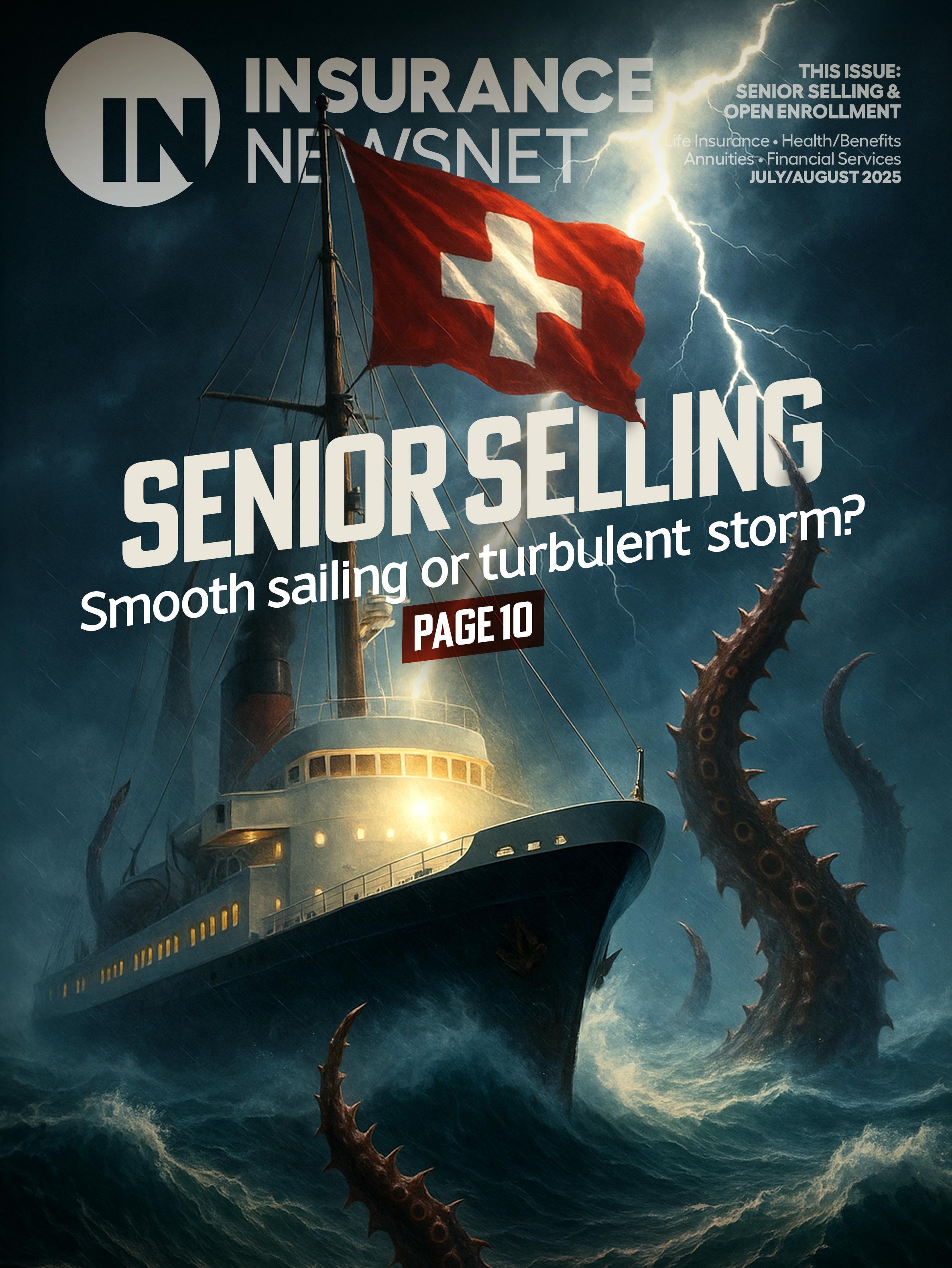
What Medicare beneficiaries really want in AEP
PAGE 26
Medicaid asset protection planning for 2025
PAGE 30

An ‘agents first’ philosophy for growth with Pan-American Life’s José Suquet
PAGE 6

What Medicare beneficiaries really want in AEP
PAGE 26
Medicaid asset protection planning for 2025
PAGE 30

If you’re ignoring life settlements, you’re not doing your job.
Advisors are overlooking one of their client’s most valuable assets without realizing it. Your duty doesn’t end with a surrender form, turn them into opportunities. Turn the page
It’s
Every year, over $100 billion in life insurance is lapsed or surrendered, often without clients ever hearing the words “life settlement.”
That’s not just a missed opportunity. That’s a fiduciary failure.
Life Settlements:
• Regulated in 45 states
• Offer 4–10x the cash surrender value
• Free, no obligation policy appraisals
• Backed by real-life outcomes, not hypotheticals
• Supported by licensed brokers who act as fiduciaries
If your client has a policy they no longer need, want, or can afford, there’s no excuse for ignoring this option.
Don’t be the advisor who says, “I didn’t know.” Be the one who says, “I’ve got a better solution.”
And there’s no better source than the Life Insurance Settlement Association (LISA)—the oldest and largest organization in the space, representing 30 years of leadership, education, and advocacy.
LISA is driving the movement to make life settlements a standard part of the financial planning conversation, and to support advisors in doing what’s right.
Think you’re fulfilling your fiduciary duty?
Turn to page 4 to rethink fiduciary responsibility and discover why life settlements are becoming the standard, not the exception. Don’t surrender, create client opportunities.



Simplicity LifeLinkTM Transforms The Way Life Insurance Is Purchased, From Quoting to Application to Issue

Save time and effort in placing cases
Impress clients with the ease and convenience of working in today’s digital world
Research and get product details all in one convenient spot
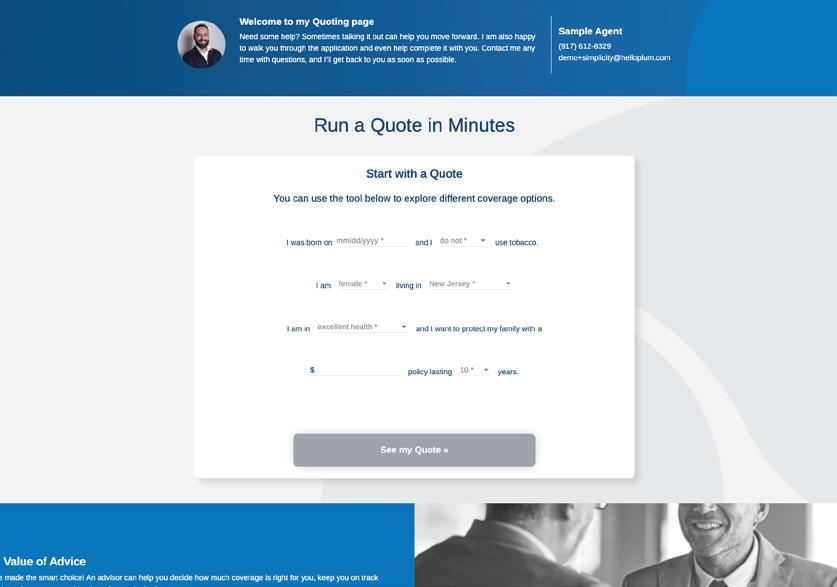




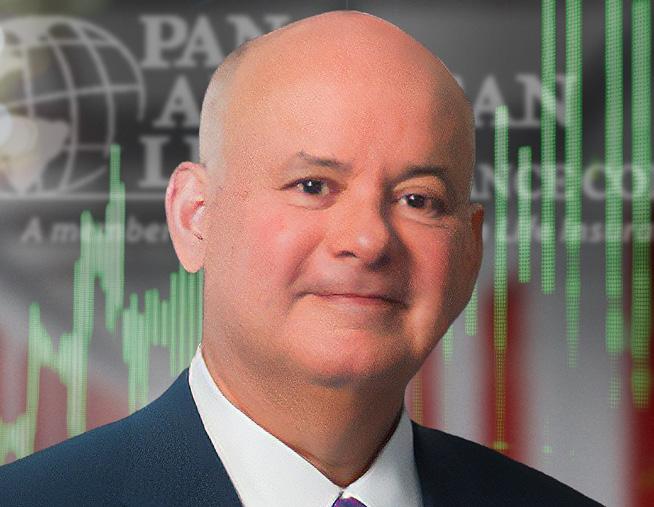
6 An ‘agent s first’ philosophy for growth José Suquet said that Pan-American Life’s success is based on keeping its focus on the agents who serve their clients.
14 Helping clients score a win
By Susan Rupe
Jeremy Ortiz’s soccer career led him to a second act in the financial services field.

Senior selling: Smooth sailing or turbulent storm?
By Susan Rupe
Brokers brace themselves for another annual enrollment period.
18 Buy-sell agreements and life insurance
By Bracknell Baker and Caleb Baker

While many business owners aspire to a smooth exit, unforeseen events can disrupt business continuity.
22 Is the best rate always the best deal?
By Drew Gurley
Although a higher rate will most certainly catch a prospect’s eye, it’s not always the best long-term solution.
26 What Medicare beneficiaries really want in AEP
By Kris Schneider
Medicare beneficiaries find annual enrollment period to be confusing and overwhelming.

30 Medicaid asset protection planning: Crisis planning vs. preplanning
By Patrick Simasko and Kelsey Simasko Eligibility rules can devastate families financially if proper planning is not in place.
32 What high-performing advisors are doing differently in 2025 By Faheem Shakeel
They talk less about products and services and more about experiences, risks and relationships.

34 Treating financial wellness By John Hilton
How can advisors help clients feel better about their financial futures?

The landscape for selling health care to seniors, particularly Medicare Advantage plans, is experiencing substantial changes, forcing financial advisors and insurance agents to reconsider their strategies and approach during Medicare’s annual enrollment period.
Traditionally, Medicare Advantage has offered an opportunity for agents due to predictable commissions and the growing popularity of these plans among seniors. However, recent changes — most notably, the elimination or drastic reduction of commissions by certain carriers — have introduced a new layer of complexity to the sales process.
Medicare Advantage plans, designed as an all-in-one alternative to Medicare, typically include coverage for hospital stays, doctor visits, prescription drugs and additional benefits such as dental, vision and hearing. This coverage has driven their popularity. Enrollment in Medicare Advantage has steadily climbed, and, today, nearly half of all Medicare beneficiaries own such policies, a trend projected to continue as the senior population expands.
For advisors and agents, however, the drive to sell Medicare Advantage plans has hinged not only on the benefits but also on consistent compensation. Recent developments, though, including major carriers reducing or completely removing commissions, have shaken this industry. Agents who counted on the stable annual renewals and upfront commissions now face
uncertainty. As one agent who contacted InsuranceNewsNet said: “While the companies may feel that they no longer need agents to write their coverage, Medicare beneficiaries would tell a different story if asked their opinion. … How can we serve the public if we are not getting paid?”
Why are carriers reducing or removing commissions? Among other things, insurers are contending with increased regulatory oversight and tighter profit margins. Regulators are also paying closer attention to sales practices to ensure seniors make well-informed decisions. The enhanced oversight, combined with rising health care costs, has driven the cost-cutting measures that are impacting agent commissions.
Despite these shifts, Medicare Advantage continues to be highly attractive for seniors. Financial advisors and insurance agents must determine how to adjust sales strategies for the new realities — if they still want to participate in the market.
While some carriers are eliminating commissions, others continue to provide compensation and support for agents. According to medicaresupp.org, initial year Medicare Advantage commissions are $705/member/year (2025). This is a 2.3% increase from $689/member/year (2024). Renewal commissions are $353/member/year (2025).
Advisors will be evaluating carrier partnerships not only on commission structures but also on stability, quality of customer service, and support.
Advisors and agents may consider
diversifying their portfolios to make up for the commission losses. Ancillary products such as supplemental health insurance, prescription drug plans and long-term care solutions can enhance value to clients while helping agents maintain revenue streams. This holistic approach may also help strengthen client relationships.
Technology is another factor reshaping Medicare sales. Using advanced customer relationship management systems, automated enrollment tools and digital marketing strategies can help grow client reach. Advisors leveraging technology will be able to reach those tech-savvy seniors who may prefer digital interaction.
Seniors navigating Medicare options may find the task confusing and possibly overwhelming. Agents who offer clear, unbiased educational content — whether through seminars, webinars, blogs or personalized consultations — will build credibility and trust for seniors seeking these plans in a market that’s more competitive for the remaining commission dollars.
Advisors and agents who can adapt to these industry shifts, emphasizing service, education and additional product offerings, may be able to continue to find success in the Medicare Advantage market. But as the agent asked: “How can we serve the public if we are not getting paid?”
John Forcucci Editor-in-chief


A Washington law firm is interviewing health advisors who were unfairly targeted by the Centers for Medicare & Medicaid Services in preparation for a potential class action lawsuit against the federal agency for its use of algorithms to punish agents who enrolled consumers in Affordable Care Act coverage.
Diceros Law is interviewing agents who tried to enroll clients in the ACA marketplace in 2024, only to find out they were kicked out of the CMS online enrollment system and suspended from selling coverage because CMS algorithms erroneously flagged them as committing fraud
Agents told InsuranceNewsNet in November that they were suspended from using the ACA online platform and lost their books of business as a result. Although agents were eventually reinstated, they lost income.
Diceros is working with Health Agents for America to identify agents who were harmed and interview them for the possible lawsuit. In addition, Diceros has been asked to provide witness testimony on the issue to the House Committee on Oversight and Government Reform. The law firm is seeking testimony from agents who lost income as well as clients who were unable to enroll in health insurance because of CMS actions.


Fewer Americans believe they will be able to financially support all their goals in life, an Allianz Life survey found. In 2025, only 70% of Americans said they feel confident about their ability to financially support everything they want to do in life. This has decreased every year since 2020 when 83% said they felt confident. Fewer (61%) feel confident specifically about meeting their savings goal for retirement.
At the same time, Americans are increasingly worried about a recession affecting how much they can save for retirement (30%, up from 25% in 2024) and taxes taking a big chunk out of their retirement funds (26%, up from 18% in 2024).
This worry could be driven by ongoing concerns about a national or global financial crisis. Nearly 2 in 3 (62%) say they are concerned that another national or global financial crisis in the near future would derail their retirement strategy. Even so, just 46% say they have incorporated the potential implications of future national or global financial crises into their financial retirement plan.

The youngest generation in the workforce is saying “no thanks” to the corporate 9-to-5 and embarking on the path to entrepreneurship.
An increasing percentage of Generation Z is ditching the corporate ladder in favor of founding their own
Rest assured, tariffs are not going away.”
— U.S. Commerce Secretary Howard Lutnick
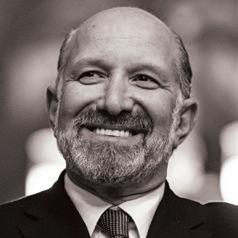
businesses. LinkedIn data found about 18% of business founders in 2024 were Gen Zers, compared with 14.5% in 2023.
About 59% of millennials and Gen Zers reported having a traditional job before starting their own company, according to a 2024 American Express survey. A survey by CNBC and SurveyMonkey found that some Gen Z workers report wanting more meaningful work and find their jobs uninspiring. Nearly half said they are just “coasting” on the job, which was higher than older generations.

Cryptocurrency is becoming more accepted in the mainstream, but the numbers show there is a long way to go as far as Americans incorporating it into their lives.
Pew Research shows about 1 in 6 U.S. adults — 17% — have ever invested in or used cryptocurrency, while half that — 8% — have used it in the past year. Crypto use is highest among men 18 to 29 years old and lowest among women 50 and older. The Federal Reserve found that 7% of U.S. adults have used crypto in the past 12 months as of 2024, down from 12% in 2021.
Compare this with 26% of U.S. households owning stocks or mutual funds, and 60% having retirement accounts, according to the U.S. Census Bureau.
That's a cents- less idea ...

For decades, financial professionals have relied on a trusted set of tools to help clients manage risk, plan for retirement, and navigate life’s financial transitions. But what happens when one of the most valuable personal financial assets, a life insurance policy, stops serving its original purpose or is no longer needed?
That’s the moment when a lesserknown option, the life settlement, should come into play. Unfortunately, many advisors overlook or are not educated about it. And in doing so, they may be leaving their clients—and their fiduciary duty—behind.
Bryan Nicholson, Executive Director of the Life Insurance Settlement Association (LISA), and Brian Casey, a partner with Troutman Pepper specializing in insurance transactional and regulatory law, explain fiduciary responsibility, regulatory reality, and why life settlements are no longer a fringe concept, but a financial planning essential.
A life settlement allows a policyholder— typically a senior age 65+—to sell a life insurance policy they no longer want, need, or can afford to a licensed provider for a lump sum. That lump sum can be many times higher than the policy’s cash surrender value.
Despite being legally recognized for over 100 years and regulated in 45 states, life settlements are still often misunderstood or ignored.
“Many advisors don’t realize that this is an option—or that failing to present it could raise questions about their fiduciary responsibility,” said Casey. “The industry hasn’t yet seen widespread litigation on that point, but the winds are
shifting, especially with respect towards more consumer protection for senior populations.”
In fact, life settlement brokers are fiduciaries by statute. “That means they’re legally obligated to act in the best interest of the policyholder,” said Casey. “Advisors who partner with licensed life
to notify policyowners of the life settlement option when they inquire about surrendering or lapsing a policy
Nicholson pointed to LISA’s “Faces of Life Settlements” campaign to illustrate the real-world impact of these transactions.
“They find out too late that they could have received five or even ten times the policy’s cash value.”
settlement brokers can bring that level of fiduciary protection to their clients.”
According to the SEC’s Fiduciary Interpretation, “An investment adviser must, at all times, serve the best interest of its client and not subordinate its client’s interest to its own.” That makes overlooking a valuable opportunity like a life settlement more than just a missed chance—it’s a potential compliance concern.
What happens when a client surrenders a policy—or lets it lapse—without ever being told a life settlement might have been possible?
“We’ve seen cases where policyholders or their families come back after the fact, frustrated they weren’t made aware of the option,” said Nicholson. “They find out too late that they could have received five or even ten times the policy’s cash value.”
As more consumers become aware of life settlements, the legal and reputational risks for advisors who fail to present the option are growing. In several states, carriers are required
Some examples used include:
• David, 88, was paying $75,000 annually on a $2 million policy he no longer needed. He received $792,000 in a life settlement—far more than the $42,000 cash surrender value.
• Janice, 78, was struggling to cover longterm care costs. A life settlement turned her $750,000 policy with just an $11,000 surrender value into $90,000 in cash.
• John and Mary, in their 70s, were about to surrender a $500,000 survivorship policy when they learned about life settlements. Their policy delivered $85,000 in value they didn’t know they had.
“These are not rare-edge cases,” said Nicholson. “They’re the types of clients every advisor has in their book of business.”
If life settlements offer such clear value, why are they still so often ignored?
Casey said several factors contribute: “There’s lingering discomfort tied to
the early days of viatical settlements in the 1990s. There’s confusion about the process. And in some cases, there’s a fear of regulatory scrutiny or lost commissions.”
But those fears are largely unfounded. Today’s life settlement industry is tightly regulated, with licensing, disclosure, and escrow requirements that protect all parties. And agents who help facilitate a transaction are often eligible for referral fees or commissions— particularly when the alternative is a lapsed policy that would generate nothing.
Some signs that a client may be a good candidate for a life settlement include:
• Rising premium costs that are straining the client’s budget
• Changes in life circumstances (e.g., retirement, death of a spouse, sale of a business)
• No longer needing to replace lost income or support dependents
• A policy that’s about to lapse or be surrendered
dealers, and gathering industry-wide data to support transparency and trust.
“We want this to be a mainstream conversation,” said Nicholson. “And we’re committed to helping advisors get there.”
For advisors who want to explore whether a life settlement may be right for a client, LISA offers a range of resources—including its newly updated Guide to Common Life Settlement Questions

Every year, more than $100 billion in life insurance is lapsed or surrendered by seniors— often without exploring alternatives.


“In many cases, the policyholder reinvests the settlement into new insurance products, annuities, or longterm care coverage,” said Nicholson. “There are follow-on opportunities for the advisor that strengthen—not weaken—the client relationship.”
The Demographic Imperative Beyond fiduciary duty, demographics are creating increased demand for solutions like life settlements.
“We’re looking at a rapidly aging population, most of whom are underprepared for retirement and long-term care costs,” said Nicholson. “Meanwhile, many of them hold life insurance policies that no longer serve their original purpose.”
“This is often one of the largest assets on a client’s personal balance sheet,” said Casey. “Why wouldn’t you evaluate it the way you would any other financial asset?”
Nicholson emphasized that LISA doesn’t advocate for life settlements in every case. But he firmly believes they should be part of the broader financial planning conversation.
“This is not a fringe product. It’s a legitimate financial tool,” he said. “And our role at LISA is to make sure it’s understood, accessible, and handled with integrity.”
To that end, LISA is investing in expanded educational outreach, building partnerships with IMOs, RIAs, and broker-
While LISA does not provide financial advice, its members include licensed brokers, providers, legal experts, and underwriters who specialize in facilitating life settlement transactions.
“Life settlements aren’t for everyone,” said Nicholson, “but they are a powerful option when the time is right. And advisors who want to uphold their fiduciary duty need to know what’s possible.”
Life insurance settlements are no longer just an option; they’re essential in financial planning. Visit LISAtoolkit.com or scan the code to get your Guide to Common Life Settlement Questions.


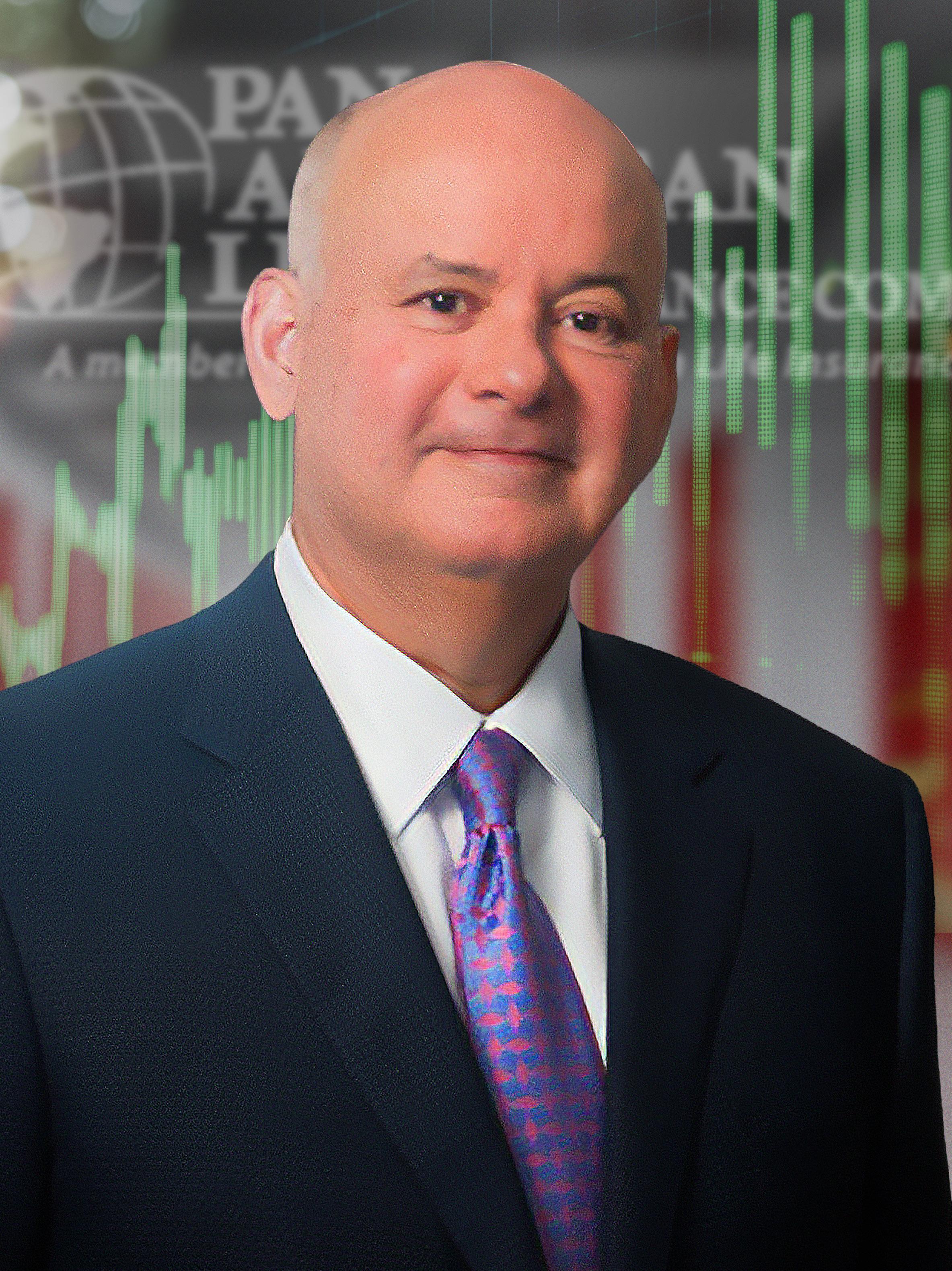
President and CEO of Pan-American Life Insurance Group JOSÉ SUQUET said that starting his career as an agent with the company “was the best decision I could have ever made.”
An interview with publisher PAUL FELDMAN
Twenty years ago, PanAmerican Life Insurance Group’s president and CEO José Suquet was tasked with turning things around at the company, which was founded in 1911 by Crawford E. Ellis, a United Fruit Co. executive during the height of the banana trade between New Orleans and Honduras.
Suquet grew the business in core Latin American markets, overhauling the company’s financial structure and cutting business lines that were not central to the company’s strategy.
In the past two decades, he has grown company revenues from $284 million to nearly $1.5 billion. Pan-American Life, composed of more than 30 member companies, has a footprint in 49 states and more than 20 countries.
In this interview with InsuranceNewsNet publisher Paul Feldman, Suquet talks about the key to the company’s past, present and future success.
Paul Feldman: One of the things that impresses me is that you’ve gone from being an agent in the field to being CEO of an insurance company — and you have one of the longest tenures I know of: 20 years as CEO of Pan-American. Tell me how you got into the business, and tell me about your journey from agent to CEO.
José Suquet: I had just graduated from college at Fordham University in New York. I was already married — I got married at the young age of 20. We lived in Park Slope, Brooklyn. I went home — my mother was there and my wife was there, and I was all excited: I had received a job offer. They said, “Wow, what is it?” And I said, “Well, I’m going to become a life insurance agent.”
And they immediately sat back and were a little trepidatious — to say the least. My mother started clutching her heart a little bit and she said, “Well, what kind of salary are you going to have?” And I said, “Well, they had two different plans. One was a salary and a small commission, but then they had a higher commission and a bonus on top of that, but no salary. And I decided to forgo the salary and go with the commission and bonus.”
At that point, I thought I had lost my mother. And my wife was also a bit scared. But it was the best decision I could have ever made. That was July 1, 1979. I couldn’t have had a more dreamlike career. And I owe it all to my roots of being an agent first.
I kept selling, and I became a unit manager for Equitable. Six years later, in 1985, I was given an opportunity to move down to Miami to take over an agency. I took over a consolidated agency, and we had a great run there. We became one of the largest agencies in the industry in the span of about eight years. I ended up with about 300 agents.
became head of the agency system at AXA Equitable and then took over as head of distribution. I was responsible for all of the agency system, all of the third-party distribution, such as regular brokerage, as well as banks, wirehouses, broker-dealers. We were running a big shop at the time and took it from about $4 billion or $5 billion in sales to about $13 billion in sales in about a seven- or eight-year period.
That would have been 2000, 2001. We became a private United States subsidiary of AXA, and I decided that it was a good time to explore other opportunities. I left AXA, took some time, and then was

Pan-American Life Insurance Group sponsored the “Criaturas de la Noche” (Creatures of the Night) exhibit in the Jaguar Jungle at the Audubon Zoo in New Orleans. José Suquet, chairman of the board and CEO, leads the ribbon-cutting ceremony.
We were doing about $25 million of new life insurance premium every year. We sold annuities, of course, through the broker-dealer, and mutual funds and investment products. I had 13 unit managers. I had an estate planning attorney on staff, a pension attorney on staff, a securities products coordinator and a marketing director.
Feldman: That’s impressive infrastructure.
Suquet: At that time, Jim Benson, who’s a legendary figure in the insurance industry, had come to Equitable, and he asked me to come up to the home office at Equitable. And at that time, AXA had taken a minority stake at Equitable. We went public before I moved up there, and we had a tremendous run. So I
recruited by BISYS, the largest life broker at that time, to run three different businesses for them. I had experience there with brokerage and then decided that I wanted to go back into the carrier world and took some time there.
Feldman: Equitable has a multinational arm. Were you involved with that as well?
Suquet: Not really, no. It was all U.S. focused. We had a tremendous run there. At that time, we had some $60 billion in variable annuities assets under management. Equitable today is still a leader in the VA and indexed annuity business. We were also very big in variable life business. Equitable, during the late 1980s, early ’90s, was having some difficult times. It was very difficult to sell
general account products because of the issues that Equitable was dealing with. So we developed variable life products, and we became the leader in variable products at the time.
I took some time off, hung up a consulting shingle and did a couple of consulting projects for big-name firms that you would know. Then I was offered an opportunity by a couple of the major Northeastern insurers to run distribution or run a business or two. But I did not want to go back to the big carriers. I wanted to run my own show. So I just held out.
The Pan-American search firm called me, and I believed it was an ideal fit. Many people in the industry who knew me were surprised that I would go to such a small company. But it has been a ride that has far exceeded my personal and professional expectations. It was not an agent-centric company.
I remember changing that immediately. I’m very optimistic that even when I’m not here — and I plan to be here for quite some time — I’ve made it clear that nothing happens in an insurance company until an application comes in the door. Your assets that you manage don’t increase until apps start coming in the door. You don’t have underwriters. You don’t have anything. I had to instill that. You should be ringing celebratory bells when the business comes in the door. That’s a real shift in culture at many carriers.
Feldman: I haven’t heard another carrier say it like that.
Suquet: Some carriers must think, “This would be a really great place if it weren’t for these pesky agents.” I had carried a rate book under my arm, so I was the complete opposite of that. I think that has permeated and will continue to permeate for at least a generation or two after I’m gone.
Feldman: What kind of changes are you seeing around the industry?
Suquet: I’ve been in the industry for 46 years as of July 1. One of the biggest changes is the emergence of private equity in the business, at both the carrier level and the distribution level. I think that’s
healthy overall. I would tell you that at the carrier level, the private equity folks are in it for an asset play and to manage assets. I think that they’re experts at that. For the most part, a number of the carriers that have gone down this path have reduced their distribution or sold their distribution or closed it up, and that’s fine. That’s understandable.
On the distribution side, the private equity firms have been the beneficiaries of this phenomenon of carriers exiting distribution. So whether it’s the Simplicys, the Integritys, etc., we happen
The regulatory environment continues to increase in scope and severity. And this is from someone who is involved in 22 different countries, jurisdictions outside of the U.S., in addition to 49 states in the United States where we’re involved and we have a fairly large regulatory infrastructure. So we don’t fight the regulation; we try and stay ahead of it and try and make it as easy as possible to do business with our distributors.
I think some companies have tried to get into markets that they probably shouldn’t be in or they don’t have the

to be on the shelf space of just about most of the major distribution organizations in the industry, primarily in the life insurance space. We also, in the U.S., do a group of fixed indemnity products and stop-loss.
We’re on the shelf space on some of that as well. The product shift has gone from variable and fixed products, which we’re still in, in the whole life to indexed — lots of indexed — whether it’s variable annuities or indexed universal life. So that’s been a change over the last 20 years, all for the good of the industry.
I think another big 800-pound gorilla is the increased pace and associated cost of regulatory and technology changes and, in particular, information security and data breaches. That has taken hold, and you must build defenses around your data and around your systems. You must educate your employees, your executives. You must provide tools for education and protection to your distributors because everyone is at risk from a cybersecurity point of view.
necessary expertise for. We have stayed true to our values and purpose, which is life, health and accident. We are not going to go after the shiny new object on the product front. We have stayed focused on whole life, participating whole life, through our absorption of Mutual Trust Life Insurance Co., and that has gone well. We’ll be celebrating our 10th anniversary of that. We have numerous choices for our agents and brokers.
And then we have recently introduced an indexed universal life product family that focuses on the simplicity of the indexed UL. So I think that those are the major changes.
On the distribution front, we continue to realize that you have to earn distributors’ business through a competitive product set, but also through superior service and an understanding of what they do. I may be either a dying breed or a dinosaur, because I don’t think there are too many people like me who have carried a rate book and who are now running insurance companies.
My mission is to make sure that the understanding that “nothing happens until an app comes in the door” permeates for another couple of generations at least in our company.
Feldman: I think that is a strong philosophy: putting your agents first. They’re the ones writing your policies. And putting distributors first because they’re helping you get your products out there.
Suquet: And another nuance about us: We do not go direct to the consumer. Our primary customer is the distributor. Even in our stop-loss business, where carriers have direct sales forces to the groups, we do not. We have a network of managing general underwriters that do this for us. So we do not go direct. We believe that our primary customer is the agent, the broker, the independent marketing organization and that is our starting point. Our first focus is service through that intermediary.
Feldman: Pan-American Life serves some niche markets in the industry. Tell us a little bit about these niches.
Suquet: When I first came here, the chairman at that time who recruited me said, “All of the challenges you are facing and the heavy, heavy competition are out of New Orleans and the United States. All of your opportunities are international.”
For my first few years, I focused on Latin America. In hindsight, it was the absolute best move. We had a variable life product that I shut down. I shut down our disability business. I did not want to compete in independent distribution with the big boys, as I call them, such as National Life or Pacific Life. All their CEOs are good friends of mine, and needless to say, those carriers are big mutual companies. We didn’t want to start off competing with that. So we went where no man has dared to go. And it proved very good for us.
As things developed, we said, “Well, how do we expand in the United States?” And little by little we created niches, but we also said we need some scale. We converted the company to a mutual holding company, and we said, “What’s the
universe of potential merger partners out there?” And Mutual Trust came up, and we hit it off with them. They were looking for a potential merger partner, and that got us into the middle-market whole life business. We’ve done that successfully for 10 years. We have a terrific distribution head of our U.S. life business, Luke Cosme, who does a great job.
We also have a niche in our high net worth foreign national business. A lot of wealthy foreigners who have a connection to the United States are looking for a high-quality company that understands that market and is not afraid of the underwriting risk, the international travel. And we do that quite well. We are experts in that area.
I think that maybe it’s because of my upbringing. I was born in Cuba and have been here since I was 2 years old. Even though we do business in 22 different countries, I still think this is the greatest country on earth. I think there’s a lot of opportunity here.
I think we’re in a real sweet spot, as long as we understand the dynamics and the risks. We have a cadre of about five reinsurers that like our business quite a bit. We have a very good track record with our reinsurers. So that’s a real niche. And that’s what we do in the United States: middle-market whole life, now indexed universal life backed up by a number of selling systems and then the high net worth foreign national business, all on the life insurance front.
Feldman: What do you see as your company’s biggest opportunity in the next five years?
Suquet: In the next five years, we want to continue to explore the Hispanic market. We’re also unique in that, through our footprint in Latin America, we have Hispanics whose parents or grandparents came from one of the countries that we currently do business in. We’re not a fly-by-night in these countries. We have been in Panama 110 years.
We’ve been elsewhere in Central America more than 70 years. We’re looking for cross-border opportunities in trade. Even though there’s talk of the tariffs and all that, there’s still significant trade going on between Mexico and the United States. So we think that we’re uniquely positioned
in terms of the life, health, and accident and travel accident products to capture cross-border type opportunities. That’s where I see the niche.
We think that the emergence of other parts of the world and their interest in the United States will continue to feed this high net worth foreign national business. So we want to continue to do that. We had our best year ever in 2024. We’re off and running again in 2025.
Feldman: One of the products that you recently launched or are launching, your indexed UL, is exciting. Will that be available through normal distribution?
Suquet: Yes, that is available in the United States. We have it available in our high net worth foreign market as well. So it is available; it’s taking hold.
Feldman: Are annuities an area of growth that you see in the future?
Suquet: They really are not. I have found throughout my career that it’s almost as important to not do things as it is to focus and go in specific directions, and we just don’t have the scale. I’d rather devote the excess capital that we have on continuing to grow our life business, the stop-loss, the group business and then our international activities as well. So now, annuity is not in the cards and I doubt very much it will ever be.
Feldman: Is there anything that I didn’t ask that I should have?
Suquet: I believe leadership is not a position, but it’s an action and the actions that lead to a position. I’m blessed to have a leadership position, but it was built by the actions I’ve chosen throughout my career and continue to display.
You must walk the talk as a leader and have clear, articulated tactics and strategies that people know. People should not guess how you feel about things. They certainly don’t have to guess with me. I’m an open book. Good, bad or ugly, they know how I feel about issues; they know how I feel about current events. As a leader, in any dealings that you have with your clients, you must be transparent and you must be authentic.
Is the Medicare market settling down or stirring up?
Brokers await the annual enrollment period.

BY SUSAN RUPE
Amanda Brewton predicts rough seas ahead as the Medicare annual enrollment period approaches.
Brewton is president of Medicare Answers Now and is a frequent speaker and trainer at industry events.
“There will be market disruptions with plans no longer being available in some counties,” she said.

In addition, she predicted carriers will adjust their prescription formularies to account for changes brought about by the Inflation Reduction Act. Now that the IRA has been in effect for a year, carriers have a better understanding of what the act’s $2,100 annual out-of-pocket maximum for Medicare beneficiaries will mean.
Hospitals also will get into the game, she said. “There will be more hospitals playing ‘chicken’ in the media with carriers as they negotiate their network contracts, which will lead to fear that Medicare beneficiaries will possibly lose their doctors.”
Technology has its own role in stirring up disruption when it comes to people signing up for coverage. “Auto-dialers and AI bots sound cool but don’t necessarily give the best experience to the beneficiary,” she said.
As the U.S. population continues to age, Medicare enrollment increases every year. As of February, about 68.5 million Americans were enrolled in Medicare — an increase of more than 1.2 million over the previous year, the Centers for Medicare & Medicaid Services reports. About 1 in 5 Americans receives health care through Medicare.
Adding to the Medicare surge is the statistic that about 15% of Medicare beneficiaries change plans in a given year, the Commonwealth Fund reports.
All this adds up to a hectic season for Medicare advisors when the 7½ week annual enrollment period begins Oct. 15 and wraps up Dec. 7.
Will the upcoming enrollment period see stability in the Medicare market or will brokers need to navigate turbulent waters for their clients? It depends on who you ask.
Brewton told InsuranceNewsNet that concern over carriers is what’s keeping agents up at night. A growing list of carriers has stopped paying commission for Medicare Part D prescription drug plans and certain Medicare Advantage plans, meaning that agents do the work of enrolling clients in coverage but receive no payment from the carriers for their efforts.
“Many are worried about carriers and about the public seeing the value in the service and guidance that agents/brokers provide,” she said. “Many go above and way beyond just the initial sale of a plan, including help with obtaining services their plan covers, enrolling in Medicare, handling claims issues and so much more.”
Sam Melamed , CEO of NCD, a dental and health insurance company, and an expert in the Medicare space, also sees disruption ahead.

“I think the first thing brokers should expect for this annual enrollment period is continued meaningful disruption,” he told InsuranceNewsNet. “Last year, during open enrollment, we had carriers in midstream take their plans off of enrollment platforms or go commission-less to try to suppress some of the business that was coming in a surprising way, and it’s reasonable to expect more of that this year.
“Especially with some of the major carriers struggling, we’ll probably see a number of plans pulled out of a number of markets where they are unprofitable. So it’s important to get a sense of whether you’re in markets where the carriers are currently struggling or not, because if they are struggling in your market, you’ll see a lot of extra disruption.”
Enrollment in MA plans continues to increase, with 51.1% of Medicare beneficiaries choosing MA plans in 2025, up from 50.4% in 2024.
Melamed said he believes MA will hold on to its market share for next year but not expand as much as in prior years because of continued disruption in the MA space. One disruption he sees with MA is a pullback on dental, vision and
“There will be more hospitals playing ‘chicken’ in the media with carriers as they negotiate their network contracts, which will lead to fear that Medicare beneficiaries will possibly lose their doctors.”
— AMANDA BREWTON
As of February 2025
68.5M
Total Medicare enrollment 51.1%
Enrolled in MA & other health plans
90.1%
Age 65 and over
81.3%
With Medicare Part D coverage
In 2026, several key changes will impact Medicare beneficiaries, particularly regarding drug costs and plan features. The out-of-pocket maximum for prescription drugs in Part D will increase to $2,100. Additionally, Medicare Advantage plans will see a 5.06% increase in payments from 2025 to 2026, totaling over $25 billion.
Below is a more detailed breakdown.
Prescription Drug Costs:
The out-of-pocket maximum for Part D, which is the amount a beneficiary pays before the plan covers the full cost of their drugs, will increase to $2,100 in 2026. This is a $100 increase from the 2025 limit of $2,000.
Medicare Advantage Plan Payments:
CMS anticipates a 5.06% increase in MA plan payments for 2026, resulting in over $25 billion in additional funding for these plans.
Inflation Reduction Act Implementation:
The Inflation Reduction Act’s changes to Part D will continue to be implemented in 2026, including the elimination of cost-sharing for certain vaccines and the restriction of cost-sharing for a one-month supply of insulin.
Risk Adjustment Models:
CMS will update the risk adjustment models for both Part C (Medicare Advantage) and Part D to reflect changes in diagnosis codes and cost data from the latest years, ensuring accurate plan payments.
Other Changes:
Additional changes may include updaing the Medicare Plan Finder, enhancing the review of marketing and communication materials, and improving rules on MA plans’ use of internal coverage criteria.
over-the-counter drug benefits that make MA a popular choice with many enrollees. He also predicts a drop in the number of zero-premium MA plans.
“The utilization of these benefits has been very high these days, but at the same time, carriers are struggling,” he said. “So if you see continued pressure there, that will probably lead to even more market pullback. It’s possible we’ll start to see some shift away from $0 premium plans. It still may be too early for that, but carriers are talking about that as well.”
Brokers also are feeling the impact of instability and disruption in the Medicare market, Melamed said.
“The biggest concern I hear from brokers is that a complicated business gets more complicated every year. It sometimes feels like the walls are closing in on all sides. Every year, there are new regulations to comply with. Meanwhile, the carriers are skittish and pulling commissions from some plans. So it feels pretty unstable to be a broker in today’s market.”
Despite the negatives that Melamed described, he is optimistic about the role of a broker in helping people enroll in the right plan.
“I think it’s never been easier for retail brokers to demonstrate their expertise,” he said. “A lot of the larger national brokers are only able to work with a few carriers, but a local broker who really knows their local market can work with every carrier in their market. They know when you go to the doctor in your neighborhood, when you use the hospital system, and they have a fluency with the local health care landscape that really matters.
“Local retail brokers also understand the networks, the formularies and the intricacies of the benefits, so it’s easy for them to become that local trusted source of information and get a lot of referrals.”
Medicare plans. She also speaks at various industry events.
“In particular, the Biden administration had proposed broadening what they defined as marketing,” Fingold said. “Marketing has had kind of a two-part definition, where the item material — the marketing piece — would have to have the intent to promote and to attract the right enrollee. But it also needed to have a certain substantive component about benefits, premium and about the specifics of the plan to be considered marketing. The importance of this is, a marketing piece has a number of regulatory provisions that must be met, plus it must be submitted to CMS for approval.”
This process can be challenging for agents and brokers, she said.
“It’s a multistep process, and it can take an extended period of time,” she said. “This is significant because CMS doesn’t allow materials to be submitted for the following contract year before June 1, and then Oct. 1 is when marketing starts. So if you want to have something in place, you must have it processed in that time frame.”
The proposed rule would have broadened the types of materials that must go through the CMS approval process, she said.
“The two-part requirements were the intent and the content,” she said. “The Biden administration proposed limiting it to just the intent. So anything that intended to attract attention, to promote the plan, would have been included in this, and that was fairly broad.”
CMS also limited marketing of supplemental benefit amounts in MA plans, she said.
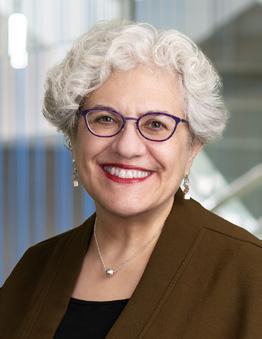
A proposed rule in the waning days of the Biden administration impacts the marketing of MA, said Helaine Fingold . She is an attorney with Epstein Baker Green in Baltimore. Fingold formerly worked at CMS and specializes in working with
“CMS seemed to be concerned that beneficiaries were making plan choices based on supplemental benefit offerings. Some plans have a bucketed proposal where you could get a certain dollar value toward a bucket of benefits. But the way it was, marketing was telling people they could get $500 on a benefit card and made it sound like it was about the money and not about the benefits. CMS was concerned that this was misleading.”
The Trump administration has not dismissed or moved forward on the Biden proposal, Fingold said.
“We’re waiting and seeing what the impact will be,” she said. “But my message is, don’t let down your compliance guard.”
A more optimistic view of annual enrollment came from Jerry Adair, Medicare broker sales manager with Health Care Service Corp. in Atlanta.
“I do believe brokers will have a little breath of fresh air when it comes to this year’s enrollment; they’ll have a little bit more of a normal AEP than what they’re used to,” he said.

Adair said he believes the Medicare market has calmed down since last year, with carriers having a chance to adapt their pricing to changes brought about by the IRA’s lowering of prescription drug costs to Medicare enrollees.
“Last year, there were big changes and the plans didn’t know how to react to them. They didn’t know how other plans would react to them, and nobody knew how it would affect their bottom line,” he said. “Carriers didn’t know how to make sure their plans would be profitable, and they also didn’t know how they would compare with their competition.”
Carriers continue to announce that they are not paying commissions on certain plans, “So it’s still crazy,” Adair said. “Some have told me that they think the enrollment period for 2026 will be just as bad as 2025, but I don’t think that will be the case.”
Adair gave some reasons why he believes the upcoming enrollment period will be easier for brokers.
“I believe carriers have a better idea of what their plans and their competitors will look like. When carriers do their planning to figure out how much membership they expect and how much they want, they will have a better idea on what their competition will be able to do now that we have one year of new rules under our belt and there isn’t anything crazy changing this year,” he said.
CMS is increasing funding for MA plans in 2026, with a final rate increase of 5.06%. This is a significant increase compared to the 2.23% increase proposed by the previous administration. The higher rate is estimated to result in an additional $25 billion in payments to MA plans in 2026. The higher payments are expected to provide more financial
stability for MA plans, particularly after two years of cuts and plan closures.
Adair said he believes the increased federal payment will result in stronger plans and a more stable marketplace.
But brokers remain concerned about carriers not paying commission on certain plans, he said. “I believe that’s more to do with the fact that these plans aren’t as profitable for the carriers. Especially on the prescription drug plans, there’s not a huge profit there.”
Consumer demand for MA will continue to grow, Adair predicted, especially as consumers with health conditions will get priced out of the Medicare Supplement market.
“I’m seeing brokers offering Medicare Advantage plans and pairing them with a hospital indemnity plan so that people can have the coverage they need without the rates going up,” he said.
Adair said he has seen more brokers leave the business in the past six months than he did in the past five years.
“This is not a good sign, because I believe strongly that the best way for someone to get the best plan for their needs is to work with a knowledgeable local broker. For brokers seeing the uncertainty of the market and a lot of them wanting to leave over the past few months, that is not a good sign.
“But I’m hopeful that this annual enrollment period will see a little bit more certainty and have brokers a little less uneasy than I’ve seen them in the past few months.”

Susan Rupe is managing editor for InsuranceNewsNet. She formerly served as communications director for an insurance agents’ association and was an award-winning newspaper reporter and editor. Contact her at srupe@ insurancenewsnet.com.

The health care landscape is ever-changing ... Don’t forget to read up on the latest at insurancenewsnet.com.
“When carriers do their planning to figure out how much membership they expect and how much they want, they will have a better idea on what their competition will be able to do now that we have one year of new rules under our belt and there isn’t anything crazy changing this year.”
— JERRY ADAIR
Innovation designed to deliver.
Diversification designed to perform.
Strategies designed to lead.

Discover how Allianz is reshaping the IUL marketplace and how you can benefit.
Proudly sponsored by


Visit our new “one-stop shop” for important information you need (and need to know) to help business owners plan for an ownership transfer of their business – and how life insurance can play a role in a smooth transition. And watch for more turnkey programs coming soon.
→ Scan the QR code, or visit → www.allianzlife.com/turnkey-programs (Secure site login required)

Actionable insights, innovative strategies, and exclusive tools to help you serve clients better and grow your business.
The indexed universal life (IUL) space is rapidly evolving—and Allianz is proud to be helping lead the way. As client expectations shift, economic conditions fluctuate, and the regulatory environment grows more complex, one thing is clear: innovation is essential. That’s why we created this IUL guide: to give you relevant insights, real-world strategies, and powerful tools to help you grow your business and better serve your clients.
At Allianz, innovation is about solving real challenges your clients are facing and building long-term value. That means developing innovative product features, leveraging proprietary platforms like our in-house affiliate’s hedging desk1 to help influence product design, and ensuring that every advancement works as hard for your clients as you do. From lockable index allocations to an interactive illustration experience, we offer tools designed to create long-term value. The value of these innovative features are in addition to the traditional benefit of life insurance, the financial protection of the death benefit.
This guide brings that innovation to life. Inside, you’ll find articles that explore:
• Diversifying within an IUL policy to help create more resilient, credible strategies—without sacrificing accumulation potential
information. It’s a resource you can put into action. Our goal is simple: to equip you with tools, insights, and solutions that deepen client trust and deliver long-
“From lockable index allocations to an interactive illustration experience, we offer tools designed to create long-term value.”
• Putting clients in greater control with features like Index Lock, designed to offer added flexibility in uncertain markets
• Leveraging the Life Advanced Markets turnkey program to engage small business owners in meaningful, action-oriented succession planning conversations using IUL
• Elevating your sales process with Ensight, an interactive digital platform that transforms complex IUL illustrations into simple, compelling client conversations
Whether you’re new to Allianz or a long-time partner, this guide is designed with your success in mind. It’s more than
term value no matter how the market shifts.
Thank you for your continued partnership and for the work you do to help your clients secure their futures. We’re honored to support you, and we’re excited about what we can achieve together as the IUL landscape continues to grow. •
Sincerely,
Jason Wellmann
Senior Vice President, Life Distribution Allianz Life Insurance Company of North America
1 Allianz Investment Management U.S. LLC (AIM US), a wholly-owned subsidiary of Allianz Life Insurance Company of North America, provides investment management and hedging services to the broader Allianz Group.
Indexed universal life insurance (IUL) provides a death benefit that is generally paid income tax-free to beneficiaries, as well as accumulation potential that can be used for various financial needs.
Indexed universal life insurance policies require qualification through health and financial underwriting.
Diversifying within a policy does not ensure that it will be credited with interest in any given year.
Because the index value locks at the end of the day, the value used to determine the index credit may be higher or lower than at the time of the request. Exercising an Index Lock may result in a credit higher or lower than if the Index Lock had not been exercised. We will not provide advice or notification regarding whether to exercise an Index Lock or the optimal time for doing so.
Guarantees are backed solely by the financial strength and claims-paying ability of Allianz Life Insurance Company of North America.
Products are issued by Allianz Life Insurance Company of North America, 5701 Golden Hills Drive, Minneapolis, MN 55416-1297.
This content does not apply in the state of New York.
Product and feature availability may vary by state and broker/dealer.
For financial professional use only – not for use with the public.
In an increasingly unpredictable market, the old playbook of chasing past performance just doesn’t cut it anymore. Indexed universal life insurance (IUL) has long been a powerful tool for both protection and accumulation potential, but it’s time we rethink how we use it. Allianz believes the future of IUL lies in diversification —and they’ve built their strategy around making that future accessible, understandable, and effective for both financial professionals and clients.
Diversification Isn’t Just a Buzzword—It’s a Long-Term Strategy Diversification in the context of IUL doesn’t refer only to spreading assets across different types of financial vehicles within a portfolio. It’s about strategically allocating across multiple allocation options and bonus opportunities—so clients aren’t betting on a single choice. That can be important in any market environment, where economic shifts can throw even the most carefully crafted index off course. “Diversification in IUL is about more than just spreading allocations,” says Corey Luke, AVP, Head of Life Advanced Markets. “It’s about creating a policy strategy that’s built to weather different market environments—not just thrive in the perfect scenario.”
You don’t have to sacrifice competitiveness to diversify.
One of the key challenges in the industry has been that diversified strategies are a good talking point but they don’t always illustrate well. Many carriers struggle to promote diversified approaches if
Allianz also pioneered one of the most innovative product features in the IUL space: lockable indexes. Clients can manually lock in an index value (once during a policy year) or set automatic triggers that can potentially if an index value reaches a predefined threshold. It’s about giving clients more control without needing them to become market experts. “A client might see a 12% index
“Diversification can take the pressure off being ‘right’ about market direction. It’s about being prepared, not predictive. And that changes the whole conversation.”
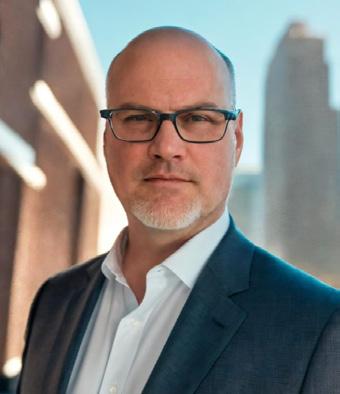
Allianz IUL products offer up to 16 allocation options—built from five indexes, three bonus structures, non-bonus options, multiple crediting methods, and a fixed account—allowing financial professionals to tailor strategies to fit each client’s comfort level with risk and long-term goals. Luke explains, “Financial professionals have the flexibility to build truly customized strategies that align with each client’s goals and risk tolerance.” Whether someone leans aggressive or conservative, the tools are there to construct a thoughtful, balanced approach. And the best part?
they lead to less competitive illustrated scenarios. Illustrated rates are set by a complex set of regulations taking into account product design, historical lookback information, and bonus availability. Due to inefficient design or a lack of options, it’s not uncommon for competitor IULs to have only one index bonus combination that illustrates best.
Allianz takes a different approach “We focus on a combination of customer value and choice when designing our products,” says Luke. “We’ve been driving index innovation for years and have many options with established historical data. Our diversified strategies maintain competitiveness so financial professionals don’t have to choose between showing a strong illustration and doing what may be appropriate for the client long-term.” It’s a major win for credibility and for clients who want a smoother experience, not a rollercoaster.
value gain mid-year and wonder if they should hold or lock in,” Luke explained. “With lockable options, they don’t have to guess. They can act or set rules that act for them. It’s powerful, and it brings a sense of control and reassurance.”
Of course, a strategy only works if it’s easy to understand. That’s where our partnership with Ensight, Allianz’s next-generation illustration system experience, comes in.
Ensight simplifies complex illustrations by making them visual, interactive, and intuitive. Financial professionals can show clients exactly how their policy is diversified, walk through “what-if” scenarios, and tailor recommendations based on risk profiles—without overwhelming them with charts and jargon. “Clients don’t want spreadsheets. They want clarity. Ensight lets us give them that.” shared Luke.
For financial professionals, it can mean fewer hours spent explaining why one index didn’t perform as expected. For
“Allianz IUL products offer up to 16 allocation options—built from five indexes, three bonus structures, non-bonus options, multiple crediting methods, and a fixed account— allowing financial professionals to tailor strategies to fit each client’s comfort level with risk and long-term goals.”
clients, it can mean reassurance. They can see for themselves that their policy is designed to absorb change, not react to it.
When clients understand their policy and aren’t second-guessing potential results, it can build trust. Financial professionals aren’t stuck in the cycle of defending index choices year after year and are able to start focusing on what matters: helping clients stay on track.
Diversification can relieve the pressure of being “right” about market direction. It can turn a volatile experience
into a smoother ride. Consistency—and results—over the longer term may be more important to the client than a single year of outsized performance.
Allianz was one of the first carriers to launch volatility-controlled indexes in IUL back in 2014. They have remained committed to innovation ever since—from developing lockable indexes to pushing the conversation around diversification forward.
“Allianz is not just innovating to stand out,” Luke says. “We’re innovating to push
the industry forward. Our goal is to help financial professionals deliver better outcomes and build deeper trust with their clients.” That’s why Allianz is out in the field, presenting, training, and partnering with FMOs and financial professionals to make these ideas actionable.
The future of IUL isn’t just about chasing performance. It’s about building resilient products designed to stand the test of time and seek to deliver results in any market. Allianz hopes other carriers will follow their lead in telling the diversification story and find a way to make diversification part of their product strategy. •
Diversifying within a policy does not ensure that it will be credited with interest in any given year. Bonused products may include higher surrender charges, longer surrender periods, lower rates, or other restrictions that are not included in similar products that don’t offer a bonus.
Although an external market index may affect your interest credited, your policy does not directly participate in any stock or equity or bond investments. You are not buying shares in any stock or index.
Exercising an Index Lock may result in a credit higher or lower than if the Index Lock had not been exercised. Guarantees are backed solely by the financial strength and claims-paying ability of Allianz Life Insurance Company of North America. Products are issued by Allianz Life Insurance Company of North America, 5701 Golden Hills Drive, Minneapolis, MN 55416-1297.
This content does not apply in the state of New York.
Product and feature availability may vary by state and broker/dealer. For financial professional use only – not for use with the public.
As financial products grow more complex and customer expectations rapidly evolve, innovation must be more than a slogan—it’s a necessity. For Allianz Life Insurance Company of North America (Allianz), innovation means building sustainable value, designing for real-world needs, and staying focused on the long-term benefit of policyholders.
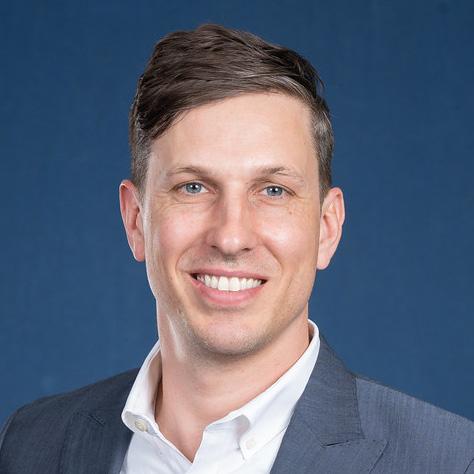
“Allianz is often first to market with new ideas,” says Jakob Erickson, product actuary at Allianz. “But what really sets us apart is our commitment to innovation that’s backed by strong pricing discipline and thoughtful execution. We don’t just launch something because we can. We do it when we believe it will provide value over the long term.”
This deliberate approach has helped Allianz earn and maintain its position as a leading provider of indexed universal life (IUL) insurance in the U.S. for the past five years.1 It’s a leadership role built on innovation, integrity, and a time-tested ability to deliver value.
The Power of a Proprietary Platform
What truly differentiates Allianz in the IUL space is its use of a dynamic hedging platform through an in-house affiliate. While most carriers rely on third-party investment banks to manage their risk exposure, Allianz took a bold step in 2006 to build a dedicated hedging team in Allianz Investment Management U.S. LLC (AIM US), a wholly owned subsidiary of Allianz. The move has been instrumental in Allianz’s ability to innovate quickly and cost-effectively.
“Our use of the AIM US dynamic inhouse hedging platform allows us to execute what I call ‘instant innovation,” Erickson explains. “There’s no friction from working with external banks, no minimums, and no extra fees. That means we can experiment, iterate, and bring new ideas to market with speed.”
That agility has allowed Allianz to develop industry-first features like Index Lock , which enables customers the opportunity to lock in an index value one time per policy year. Offered at no additional cost, this feature has delivered real results: policyholders have locked in more than $100 million in gains, with an average locked interest credit of 9.8%.1
Allianz has a long history of being first to market with game-changing features. It introduced volatility-controlled indexes to the IUL space as early as 2014—years before the broader industry began to follow suit. The company also pioneered crediting methods like monthly sum in 2005 and has continued evolving with newer methods like the Blended Index Strategy in 2008 and the Trigger Method in 2013.
comes the potential for larger swings.”
Allianz also takes a quality-over-quantity approach. Instead of overwhelming clients with dozens of options, the company offers a curated lineup of indexes, each rigorously tested and aligned with longterm policyholder needs.
“It’s not about offering the most options. It’s about offering the right ones,” Erickson adds. “Our lineup offers our customers the potential to earn credits regardless of the environment, whether that’s through a competitive fixed rate, an uncapped equity index or something in between. ”
While technological innovation is a major driver, it’s customer value that ultimately guides Allianz’s product development. “My role is to take what’s technically possible and translate that into something that creates value for customers,” says Erickson. “We always ask, ‘How can this
• Top 5 IUL and FIA carrier over the past 5 years1
• 1st to Market with volatility-controlled indexes
• Index Lock feature has enabled over $100M in locked gains with average credit of 9.8%2
• Since 2006, average index credit: 6.4% vs. fixed account: 3.75%3
• 4 lockable indexes available—currently more than any other IUL competitor...
Today, the company offers four lockable indexes, further empowering customers to take a level of control of their IUL policy results and giving financial professionals new tools to tailor strategies.
“Each of our index offerings is designed with a different return profile in mind,” Erickson notes. “Some use elements like volatility control to produce more predictable returns. Others have more exposure to the equity markets and with that
help someone achieve financial goals?’”
This philosophy shows up in multiple ways. Allianz’s IUL products allow policyholders to access available cash value through policy loans and withdrawals and allocate loans across different index allocations, tailoring their strategy during the accumulation or income phase of their contracts. Guaranteed bonuses, guaranteed loan rates, transparency in product design, and
client-friendly illustrations further reinforce Allianz’s customer-first philosophy.
“Flexibility, transparency, and guarantees in the right places—that’s what sets us apart,” says Erickson. “We’ve been guaranteeing our loan rate on our IUL products for over a decade. That stability can give customers a sense of reassurance.”
It’s also evident in the company’s investment in support tools, like Ensight , a digital illustration experience that helps financial professional visually communicate hypothetical results and potential outcomes.
“When financial professionals can show the potential value visually, it can help clients make more informed decisions—and strengthen that trust,” Erickson says.
Resilience in a Volatile World Innovation alone isn’t enough—it must be sustainable and resilient. Allianz’s approach to risk management is built on a solid foundation of actuarial soundness and financial strength. The insurance carrier’s conservative investment philosophy ensures that product promises are backed by strong reserves and a stable bond portfolio.
But it’s on the hedging side where things get exciting. The AIM US dynamic hedging team has weathered multiple market downturns, including the 2008 financial crisis and more recent volatility. While some competitors were forced to halt sales or reprice their indexed products during market disruptions, Allianz’s internally managed hedges continued to perform as designed.
Allianz doesn’t just react to industry trends. It anticipates them. The company has been at the forefront of product evolution, from volatility-controlled indexes introduced in 2014 to the more recent expansion of lockable index features.
Allianz is also deeply involved in shaping regulatory discussions, with internal teams that actively adapt to changes without compromising value or compliance. “I’ve personally worked through five major regulatory updates,” Erickson says. “No matter the environment, we’ve always found a way to deliver value. That’s the power of being engaged and agile.”
Innovation at Allianz also stems from cross-functional collaboration, pulling ideas from product teams, the hedging team, financial professionals, and beyond. “Sometimes the best ideas come from a single conversation,” Erickson notes. “Index Lock came from a discussion about a new index. Someone from the hedging team said, ‘We can let customers lock this in for free.’ That became one of our most powerful features.”
Ultimately, all this innovation is paying off for customers. Since 2006, policies using Allianz’s indexed strategies have averaged a 6.4% crediting rate, compared to 3.75% in fixed accounts.2 That 2.65% outperformance, year over year, can have a profound impact on long-term wealth accumulation.
Even if future index returns produce more conservative results, the added value can still be significant. “Even if we temper expectations and say 1.5% may be more realistic long-term, that’s still real,
consistent added value for the customer,” Erickson says.
With more than 20 years of leadership in indexed products, Allianz continues to push the boundaries of what’s possible. The company continues to evolve with the needs of clients and financial professionals, leveraging internal knowledge , advanced technology, and a deeply held commitment to innovation with integrity.
“We take pride in launching products that are built to last,” Erickson says. “We want clients to be satisfied not just in year one, but in year ten, year twenty, and beyond.” For financial professionals and their clients, that can mean reassurance, knowing that the strategies they choose are backed by strength, stability, and a company built for the long haul.
“We’re proud of what we’ve built,” says Erickson. “And we’re just getting started.” •
1 Q1 2020-Q4 2024 U S Retail Individual Life Insurance Sales BY CHANNEL with All Splits, based on annualized with excess premium, LIMRA.
2 Results based on 30,114 unique locks from 11/29/2019 – 12/31/2024. Potential interest will vary. Past results are not a guarantee of future results.
3 The average interest credited shows IUL insurance policy crediting history of Allianz® IUL policies from 3/1/2006 through 12/31/2024 and do not include policy fee and charges. We chose this time frame to ensure that we present the most complete 12-month data available for this study. Credits are based on actual caps, participation rates, and interest rates that have been applied to inforce policies. Products included in analysis include all IUL products sold since 2006. All products have not been available during the entire duration of the example shown.
Policy loans and withdrawals will reduce the available cash value and death benefit and may cause the policy to lapse, or affect guarantees against lapse. Withdrawals in excess of premiums paid will be subject to ordinary income tax. Additional premium payments may be required to keep the policy in force. In the event of a lapse, outstanding policy loans in excess of unrecovered cost basis will be subject to ordinary income tax. If a policy is a modified endowment contract (MEC), policy loans and withdrawals will be taxable as ordinary income to the extent there are earnings in the policy. If any of these features are exercised prior to age 59½ on a MEC, a 10% federal additional tax may be imposed. Tax laws are subject to change and you should consult a tax professional.
Bonused products may include higher surrender charges, longer surrender periods, lower rates, or other restrictions that are not included in similar products that don’t offer a bonus.
Although an external market index may affect your interest credited, your policy does not directly participate in any stock or equity or bond investments. You are not buying shares in any stock or index.
Because the index value locks at the end of the day, the value used to determine your index credit may be higher or lower than at the time of the request. Exercising an Index Lock may result in a credit higher or lower than if the Index Lock had not been exercised. We will not provide advice or notification regarding whether to exercise an Index Lock or the optimal time for doing so.
Allianz Investment Management U.S. LLC provides investment management and hedging services to the broader Allianz Group.
Guarantees are backed solely by the financial strength and claims-paying ability of Allianz Life Insurance Company of North America.
Products are issued by Allianz Life Insurance Company of North America, 5701 Golden Hills Drive, Minneapolis, MN 55416-1297.
This content does not apply in the state of New York.
Product and feature availability may vary by state and broker/dealer.
For financial professional use only – not for use with the public.

Allianz Life Insurance Company of North America leads the way with Index Lock, an industry-first indexed universal life (IUL) insurance feature that empowers clients to lock in an index value, once anytime during the crediting period — as long as the index change is positive. It’s smart, simple, and offered at no additional cost. Thousands of clients are locking in gains. Are yours?

$100+ Million Locked-In Gains
Clients are actively protecting their accumulation.


4 lockable indexes available Currently more than any other IUL competitor.


→ How it Works
• Lock manually during favorable conditions
• Set automatic triggers based on predefined targets
With Index Lock, your clients don’t need to time the market. They can have a level of control . 9.8% Average Locked Interest Rate Real results. Real returns.
30,114 Unique Locks Set That’s 30,114 moments of reassurance.
• Potentially capture gains and protect from market downturns —no guesswork required
Results based on 30,114 unique locks from 11/29/2019 – 12/31/2024. Potential interest will vary. Past results are not a guarantee of future results. Guarantees are backed solely by the financial strength and claims-paying ability of Allianz Life Insurance Company of North America. Product and feature availability may vary by state and broker/dealer. This notice does not apply in the state of New York.
Products are issued by Allianz Life Insurance Company of North America, 5701 Golden Hills Drive, Minneapolis, MN 55416-1297. For financial professional use only – not for use with the public.
For financial professionals working with business owners, navigating the intricacies of succession planning can be daunting. That’s why Allianz Life Insurance Company of North America (Allianz) has launched the Life Advanced Markets turnkey program—a powerful and creative solution that helps financial professionals initiate and elevate business succession planning conversations with small business clients.
With a robust library of tools, sample legal documents, and integrated life insurance funding strategies like indexed universal life (IUL) insurance, this program helps position Allianz-appointed financial professionals as valuable partners in clients’ long-term business succession planning.
“The turnkey program is a set of tools and resources designed to equip financial professionals, their clients, and even clients’ professional advisors, like attorneys and CPAs, to create and maintain a plan for successful business succession, exit, and transition,” says Robert Richert, Advanced Markets Senior Director at Allianz.
Richert’s inspiration for the program stems from his years of experience as a practicing attorney, formerly in private law practice, and later as a life insurance agent and wealth strategist in the upper Midwest.
Working with small business owners, farmers, and ranchers in rural communities, he noticed that while business owners wanted to plan for succession, their local legal counsel often lacked deep expertise in the field and in some cases the resources necessary to get started creating an effective succession plan.
“These attorneys were jacks-of-alltrades,” says Richert. “They might be handling a divorce case one day, a DUI defense the next, and didn’t always have the technical knowledge to create or finalize a plan or keep a business succession plan moving forward.”
The Allianz turnkey program was built to fill that gap—providing high-quality, attorney-authored documents that attorneys can easily tailor to fit their client’s specific needs and pairing those tools with proven life insurance solutions like IUL.
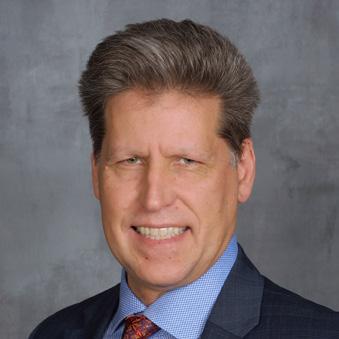
While the program does not offer legal or tax advice, it offers an extensive framework to help business owners and their team of professionals build momentum in succession planning. Financial professionals can lean on this support to confidently guide clients through initial planning conversations— while highlighting the strategic benefits of leveraging IUL insurance policies for funding buy-sell agreements or key person coverage.
The program is geared toward Allianz-appointed life insurance agents and their small business clients. Richert defines a small business as typically having less than 100 employees and being closely held, commonly structured as either a sole proprietorship, partnership, LLC, or S Corp.
Whether the business has never created a succession plan (but recognizes the need to do so) or needs to revisit an outdated plan, the program offers a clear on-ramp to meaningful succession planning—backed by a flexible funding
strategy using life insurance. IUL is often an effective option due to its flexibility and its ability to provide death benefit protection along with potential for cash value accumulation that can be accessed for retirement or business needs.1
At the core of the program are practical, ready-to-use tools:
• Specimen documents: Including hybrid (“wait and see”) buy-sell agreements, promissory notes, spousal consents, corporate resolutions, and split-dollar agreements.
• Funding comparison grids: To evaluate cash, installment sales, life insurance, and disability insurance as funding options—highlighting the strengths of IUL for long-term business continuity planning.
• Valuation method charts: Comparing common valuation methods such as stated value, book value, appraised value, and more.
• Fact finder and discussion starters: Used to prompt initial conversations with clients. “Just asking, ‘What would happen to your business if you weren’t around tomorrow?’ can be a way to quickly capture a client’s attention,” Richert notes.
While similar programs exist in the market, Richert believes Allianz’s offering stands apart due to the quality and depth of its documentation and the integration of customizable IUL funding strategies. “Our objective is to go above and beyond and truly be turnkey,” he says. “These documents are detailed, easy to understand, and address 80-85% of what a business will need.” They’re robust enough for
attorneys to work with them easily, without requiring tons of customization.
For financial professionals, the turnkey program serves as both a door-opener and a business deepener. Richert suggests starting with one powerful question: “Have you completed a business succession plan?”
No matter the answer, the financial professional has a path forward. If the client says yes, the financial professional can offer a complimentary review of the insurance coverage built into the plan. If the client says no, the turnkey program provides materials to demonstrate why a
Beyond one-on-one client conversations, financial professionals can use the program to deliver workshops at trade conferences or continuing education events for CPAs and attorneys. “This is a great foundation for a breakout session,” says Richert. “The documents and discussion points resonate especially well with legal and tax professionals.”
The Life Advanced Markets team includes seasoned attorneys like Richert and his colleagues. Together, they support financial professionals with document reviews,
“We wanted to build something real, something helpful, something that could help move the conversation forward quickly. And that’s exactly what this program does.”
plan is important and how Allianz—and IUL solutions—can help get started.
Some of Richert’s largest insurance sales came from reviewing outdated buy-sell agreements where the value of the business had outgrown the existing coverage. IUL policies, with their longterm death benefit and flexible funding features, often proved to be the most compelling solution.
customized talking points, and case design support. With more than 30 years of legal and financial experience, Richert brings credibility and insight to every interaction—including how to effectively structure IUL policies to meet a client’s unique business needs.
The program is also designed to evolve. For instance, the recent US Supreme Court decision in Connelly v. United States
(June 2024) significantly impacted how life insurance is treated when valuing a deceased shareholder’s interest in a corporation for estate tax purposes. Richert and his team are already working to integrate guidance and updates to reflect the new legal landscape and its implications for IUL-funded arrangements.
The turnkey business succession package is just the beginning. Allianz is already developing additional turnkey programs for advanced estate planning and executive benefits strategies, leveraging the flexibility and tax-advantaged nature of indexed IUL insurance. Richert describes it as a “program for the everyday professional”—intentionally crafted to be straightforward and accessible, aiming to empower financial professionals and their clients to take meaningful action.
“We wanted to build something real, something helpful, something that could help move the conversation forward quickly,” he says. “And that’s exactly what this program does.”
For financial professionals ready to strengthen their value proposition and help guide business owners with valuable resources, Allianz’s turnkey program delivers the clarity, tools, and knowledgeable support—powered by IUL—to lead with impact. •
1 Policy loans and withdrawals will reduce the available cash value and death benefit and may cause the policy to lapse, or affect guarantees against lapse. Withdrawals in excess of premiums paid will be subject to ordinary income tax. Additional premium payments may be required to keep the policy in force. In the event of a lapse, outstanding policy loans in excess of unrecovered cost basis will be subject to ordinary income tax. If a policy is a modified endowment contract (MEC), policy loans and withdrawals will be taxable as ordinary income to the extent there are earnings in the policy. If any of these features are exercised prior to age 59½ on a MEC, a 10% federal additional tax may be imposed. Tax laws are subject to change and you should consult a tax professional.
Allianz Life Insurance Company of North America and the Life Advanced Markets team do not provide advice or financial planning services. For financial professional use only – not for use with the public.
Indexed universal life insurance (IUL) provides a death benefit that is generally paid income tax-free to beneficiaries and requires qualification through health and financial underwriting.
This content is for general educational purposes only. It is not intended to provide fiduciary, tax, or legal advice and cannot be used to avoid tax penalties; nor is it intended to market, promote, or recommend any tax plan or arrangement. Allianz Life Insurance Company of North America, its affiliates, and their employees and representatives do not give legal or tax advice. Customers are encouraged to consult with their own legal, tax, and financial professionals for specific advice or product recommendations.
Product and feature availability may vary by state and broker/dealer.
Guarantees are backed by the financial strength and claims-paying ability of Allianz Life Insurance Company of North America.
Products are issued solely by Allianz Life Insurance Company of North America, 5701 Golden Hills Drive, Minneapolis, MN 55416-1297. 800.950.1962. www.allianzlife.com
This content does not apply in the state of New York.




JEREMY ORTIZ found the sport of soccer led him to helping clients score big in reaching their goals.
By Susan Rupe
After Jeremy Ortiz graduated from LaSalle University, his life became what he called “soccer 24/7.” A member of the men’s soccer team at the Philadelphia university, Ortiz went on to play for a different hometown team, the Philadelphia KiXX. The KiXX was a professional indoor soccer team that competed as a National Professional Soccer League expansion franchise and later played in the Major Indoor Soccer League.
In addition to playing for the KiXX, Ortiz coached youth soccer. “I was a coach and I continued to play, and I thought this was going to be my life for the next few years,” he said.
The KiXX folded two years after Ortiz began playing for the team, but he persevered in his soccer career.
“I was in limbo, trying to figure out whether I was going to join the ‘real world’ or continue with soccer,” he said. “I thought I would try out for some other teams and see what happened.”
He was recruited for the Rochester (N.Y.) Lancers, where he played for two years and first learned about the business that is his career today: life insurance and financial services. Ortiz is now an agent with New York Life and a registered representative with NYLIFE Securities in the Philadelphia area.
The Lancers’ head coach also was a New York Life agent, and he talked with Ortiz about the business.
“I thought it was interesting,” Ortiz told InsuranceNewsNet. “He’s a soccer coach and he’s a financial professional; he’s doing both, and maybe that’s something I can do when I’m done playing soccer.”
Playing professional soccer “comes with an expiration date,” Ortiz said, and he started to think about what he would do when he reached that date. But in the meantime, he continued to play soccer — in Australia,
then back in Rochester, and then in Baltimore, where he helped his team, the Baltimore Blast, win the Major Arena Soccer League championship in 2016.
After that championship, Ortiz wanted to return closer to his South Jersey roots. During his time in Australia, he worked for a stock market options trading company, where he learned to trade options in the Australian stock market.
a career with New York Life. He sent his resume to the managing partner at the company’s Philadelphia area office.
The professional soccer world is a small one, and the managing partner also had played soccer.
“We knew a lot of the same soccer people because the soccer world in the Northeast is so small,” Ortiz said. “We really hit it off.”
“It doesn’t matter whether you’re Dominican, Salvadoran, Colombian, Mexican or Puerto Rican — we all have that common goal, that American Dream.”
After returning to New Jersey, Ortiz worked for a while in the mortgage market, but eventually learned it wasn’t the place for him.
A stock brokerage firm opened in Philadelphia, and Ortiz decided to apply for a job there. “I figured I didn’t have anything to lose. I would study hard, do what I needed to do and break through from that.”
After obtaining his licenses, Ortiz said he called on high net worth individuals. “I did the whole ‘smile and dial’ thing, making 100 calls a day,” he recalled. “It was not easy, but I learned a lot. You’re constantly dealing with rejection.”
During the COVID-19 shutdown, Ortiz found himself in limbo again. His employer ceased operations, and Ortiz went back to coaching soccer while looking for a new job in financial services.
He eventually landed a position at another financial services firm, where he helped clients with their retirement planning and moving their funds from their 401(k)s into individual retirement accounts. He enjoyed the job and was making money at it. But he was restless.
“It was a remote job. I was in my house every day. I had cabin fever,” he recalled. “I wanted more.”
Ortiz looked up his former Lancers coach and talked with him again about
Ortiz joined New York Life in 2023, and said he hasn’t looked back.
“It’s a great environment, to work with people who want everyone to succeed,” he said. “We’re technically on our own as far as being an agent, but we’re not alone. We have resources, and there’s always someone we can work jointly with.
“I feel like I finally found my place where I can do good work and help people. It took a while for me to get to this place, but as cliche as it sounds, everything happens for a reason. Everyone’s on a different timeline.”
Ortiz also is active with the National Association of Insurance and Financial Advisors. NAIFA-Greater Philadelphia invited him to be one of the presenters at its recent Morning with the Rising Stars event, which salutes the accomplishments of young advisors in the region.
His soccer connection remains strong, as many of the people Ortiz knows from the soccer world have become clients and have given him referrals.
Although Ortiz helps many clients with their life insurance needs, he also has become more involved in helping clients plan for retirement. He also helps clients save and invest for life goals such as buying a home or educating their children.
But life insurance is still the bedrock of what he does. “We’re protection first,” he said. “So I always ask clients those tough
questions and have those conversations around life insurance. And I educate clients about what life insurance can do for them and their loved ones because when most people think about life insurance, they think only about the death benefit. Not everyone is aware of the living benefits of life insurance.”
Ortiz is the son of immigrants who came to the U.S. as children: a father from the Dominican Republic and a mother from El Salvador. Growing up in a Spanishspeaking household in South Jersey while “being American” outside the home was “an interesting dynamic,” he said.
“I was learning both the Dominican and Salvadoran cultures and speaking Spanish at home while being American at the same time,” he said. “When you’re at school or you’re outside playing with other kids, everyone is American and you’re speaking English. But then you go home, and you’re speaking Spanish, you’re listening to Spanish music, there are the telenovelas on TV and you’re eating Dominican and Salvadoran food. My wife is Mexican, so now that’s three different cultures that I’m part of.”
Ortiz has clients from the Hispanic community of Philadelphia and South Jersey, and he believes it’s important to teach members of that community about protecting their families and building generational wealth.
“It doesn’t matter whether you’re Dominican, Salvadoran, Colombian, Mexican or Puerto Rican — we all have that common goal, that American Dream,” he said. “We all want to have a great job, have a great family and feel safe.”

Susan Rupe is managing editor for InsuranceNewsNet. She formerly served as communications director for an insurance agents’ association and was an award-winning newspaper reporter and editor. Contact her at srupe@insurancenewsnet.com.
Like this article or any other? Take advantage of our award-winning journalism, licensure and reprint options. Find out more at innreprints.com.
Employees across all sectors are concerned that artificial intelligence will replace humans in the workplace, but a recent study puts those fears to rest. The 2025 Insurance Labor Market Study released by insurance recruitment specialists Jacobson Group and Ward, the performance benchmarking division within Aon’s Strategy and Technology Group, found that 55% of American insurance companies plan to hire more staff over the next 12 months, primarily in life/health insurance (60%). The largest growth is projected to be in technology, underwriting and claims.

According to the study, most insurers are looking to hire due to an expected increase in business volume (33%) or planned expansion of business or new markets (34%). In fact, 74% of companies expect to grow revenue over the next 12 months — a sign that, rather than reducing staff because of AI, many are optimistic about continued growth.
The study also found 12% of American insurance companies plan to reduce staff over the next 12 months, marking an increase from 10% in the previous year. This is mostly due to business restructuring (10%) rather than AI job losses.

Reacting to a troubling rise in chronic illnesses among younger Americans, two organizations — GoMo Health and Insurance Collaboration to Save Lives — have joined forces to form the ForwardLiving Partnership, a new initiative to help insurers better support policyholders before they become critically ill. The ForwardLiving Partnership is a proactive push to adapt the insurance industry to a stark new reality: More Americans in their 20s, 30s and 40s are developing serious conditions such as diabetes, hypertension, and heart disease — conditions once associated with aging. Insurers are taking note, as these early-life diagnoses lead not only to higher claim volumes but also to
increased disability and premature death across multiple lines of insurance.
The ForwardLiving Partnership program brings together GoMo Health’s behavioral science platform and ICSL’s research and actuarial insights. The result is a suite of customizable, digital care tools to manage chronic illness, reduce risk and keep younger people healthier for longer. These tools are designed to be integrated into existing insurance plans and focus on remote monitoring, mental health and personalized support to promote healthier daily decisions.

The California Supreme Court is tackling the thorny question of whether the state’s life insurance lapse laws apply to policies that originated in other states.
The court agreed to a request from the Court of Appeals for the Ninth Circuit in

Although most advisors talk about death benefits when selling life insurance, selling the living benefits as well offers a differentiated approach.”
— Mark Creighton, regional vice president, south region at Mutual Trust

Pitt v. Metropolitan Tower Life Insurance Co. The case originates with plaintiff Susan A. Pitt, a beneficiary whose claim was denied following the insurer’s stance that California lapse laws did not apply because the policy was initially issued in Illinois.
California’s 2012 insurance code update requires life insurers to give a 60day grace period and notification of termination at least 30 days prior to any action. The law also gives consumers the right to designate a third party to receive notices of unpaid premiums or impending termination.



Ameritas Life filed suit in U.S. District Court against a West Virginia college with a similar name. The insurer argues that Ameritas College has infringed on the corporation’s registered trademark since the college changed its name from Huntington Junior College in February.
The corporation argues in the complaint that Bankers Life Insurance Company of Nebraska first used the “made-up” word “Ameritas” in commerce around 1987 and eventually began using it as its name because its previous moniker was “too limiting.”
According to the complaint, the word Ameritas was created from a combination of the words “America” and “Merit,” which the corporation is arguing was entirely made up by it and used exclusively for 37 years.
SILAC® is licensed as SILAC Life Insurance Company in the state of California, license #6244-8. This is a product of the insurance industry and not guaranteed by any bank, nor insured by FDIC or NCUA/ NCUSIF. Prroduct availability may vary by state. In Idaho, policy form is ELCFIA-ID. Withdrawal charges, market value adjustment, and bonus & interest recovery charges may apply to withdrawals made during the withdrawal charge period. Not a deposit. Not insured by a federal government agency. Restricttions apply. May only be offered by a licensed agent.
“Bloomberg®,” and Bloomberg Versa 10 Index (the “Index”) are service marks of Bloomberg Finance L.P. and its affiliates, including Blooomberg Index Services Limited (“BISL”), the administrator of the Index (collectively, “Bloomberg”), and has been licensed for use for certain purposes by SILAC Insurance Company (the “Licensee”). Bloomberg is not affiliated with Licensee, and Bloomberg does not approve, endorse, review, or recommend the financial products named herein (the “Products”). Bloomberg does not guarantee the timeliness, accuracy, or completeeness of any data or information relating to the Products.



Life insurance can secure business transitions and build future confidence.
By Bracknell Baker and Caleb Baker
In today’s complex business landscape, advisors play a vital role in guiding business owners through critical transitions, and succession planning is paramount among business owners’ concerns. While many business owners aspire to a smooth exit, unforeseen events can disrupt business continuity. A well-structured buy-sell agreement, funded by life insurance, is essential to navigate these transitions, both providing protection and fostering confidence in the future.
As advisors, it is our responsibility to help our business-owner clients understand the options they have available to them. Let’s look at the foundational aspects of these options and examine why they are different from key-person coverage.
A buy-sell agreement is a legally binding contract that dictates what happens to a business owner’s interest in the event of death, disability or retirement. It establishes a predetermined plan for transferring ownership, ensuring a smooth transition and protecting the interests of all parties involved. Life insurance is commonly used to fund these agreements, providing the necessary liquidity for the buyout.
There are two primary structures for buy-sell agreements.
» Cross-purchase plan: In this plan, each owner agrees to purchase the departing owner’s interest. Life insurance policies are typically held by each owner on the lives of the other owners. The proceeds are paid directly to the surviving owners, enabling them to buy out the deceased owner’s share from their estate.
» Stock redemption (or entity purchase): Here, the business itself agrees to buy the owner’s shares upon their death, disability or retirement, with the
price or valuation formula predetermined. The business owns the life insurance and is the beneficiary, using the proceeds to purchase the owner’s shares.
Key-person life insurance is coverage on a specific individual whose death would create a financial hardship on the business. The proceeds of the policy are most used to pay out any remaining compensation or bonus due to the key person’s survivors and to stabilize the business and provide a pool of liquidity during the hiring process to replace the key person.
You may ask whether that means key-person coverage is only for nonowners, and the answer is no. Keyperson can be used for owners, but the primary difference is that in a buysell structure, the policy is intended to fund the ownership transition of a business. In a key-person policy, the ownership is often left intact and the key-person proceeds are intended for business purposes.
Buy-sell agreements funded by life insurance offer numerous advantages that instill confidence in business owners about the future of their enterprise.
» Control over succession: Buy-sell agreements ensure that ownership remains with the intended parties, preventing it from falling into the hands of others.
» Clarity and certainty: A buy-sell agreement establishes a clear exit strategy and a ready source of funding for the owner’s interest, removing ambiguity and potential disputes.
» Family protection: Buy-sell agreements provide financial security to the owner’s family by providing liquidity to help maintain their lifestyle and manage estate matters.
» Preservation of legacy: A buy-sell agreement allows business owners to know that their life’s work has a defined value, that the business can continue smoothly, and that their loved ones are protected.
» Cost-effective funding: Life insurance is a relatively cost-effective tool for funding buy-sell agreements, ensuring that the necessary capital is available when needed.
These powerful benefits can allow confidence and certainty in the future for your business-owning client. In addition, that confidence that they have may dovetail with the other planning they are doing with you.
Bringing up this topic and working on it with your client highlights three great additional benefits.
» Strengthening client relationships: By addressing a critical need and providing peace of mind, advisors solidify their value to business-owner clients.
» Demonstrating expertise: Effectively structuring buy-sell agreements and implementing appropriate life insurance funding strategies showcases the advisor’s knowledge and capabilities.

Technology plays a key role in streamlining complex processes. ...
The advent of digital life insurance partners makes the implementation much easier for your client and for you as the advisor.
» Future-proofing businesses: Advisors help business owners establish a resilient framework that can withstand unexpected transitions and ensure long-term stability.
Technology as an enabler
Technology plays a key role in streamlining complex processes. Online platforms are designed to simplify the process of obtaining the life insurance needed for buy-sell agreements, making it more efficient for both advisors and business owners.
Most often, buy-sell structures are funded with term life insurance. The process to put the buy-sell together requires a few moving pieces and longer discussions. But once the decision is made to move forward and use term life insurance to fund the agreement, that part of the process should be easier. The advent of digital life insurance partners makes the implementation much easier for your client and for you as the advisor.
Digital life insurance partners provide several benefits.
» Tools and resources: Access to tools that help determine the right amount of life insurance coverage and educational resources on life insurance.
» Comparative pricing: The ability to easily compare pricing across multiple insurance companies.
» Digital efficiency: A fully digital application process that allows advisors to provide clients with dedicated quote links and track progress.
» Client-focused communication:
Options for clients to communicate in their preferred way, whether by email or phone.
Life insurance isn’t only a funding mechanism for buy-sell agreements; it’s the cornerstone that makes these agreements viable and effective. Without it, the promises made in a buy-sell often become empty ones.
Imagine a scenario where a business owner dies, and the agreement dictates a buyout, but the business or the surviving owners lack the cash. Disputes, financial strain, or even the forced sale of the business can ensue.
Life insurance eliminates this risk. It guarantees that the agreed-upon funds will be available precisely when needed, ensuring a fair and seamless transition. By understanding and effectively using life insurance within buy-sell agreements, advisors empower clients to protect their businesses, their families and their legacies with certainty and confidence.
Bracknell Baker, CFP, CLU, ChFC, and Caleb Baker, CLU, are cofounders of Simplisure. Contact Bracknell at bracknell. baker@innfeedback. com and contact Caleb at caleb.baker@ innfeedback.com.



Annuity sales stopped setting records in the first quarter, but few are complaining.
Total Q1 sales for all annuities were $98.2 billion, according to Wink’s Sales and Market Report, down 1.9% compared to the previous quarter and down 5.7% compared to the same period last year.
Athene Life & Annuity again ranked as the No. 1 carrier overall for annuity sales, with a market share of 9.7%. New York Life came in second place, while Equitable Financial, Corebridge Financial and Allianz Life completed the top five carriers in the market, respectively.
Non-variable deferred annuities, which include multiyear guaranteed, traditional fixed, and indexed annuities, were a bright spot in the quarter. Sales of $62.7 billion were up 1.7% compared to the previous quarter.
Conversely, income annuity sales were $3.1 billion, down 10.3% compared to the prior quarter and down 13.2% compared to Q1 2024. Income annuities include immediate income and deferred income annuities.

Advisor Jeffrey Cutter is appealing the lone guilty verdict in his trial in a Securities and Exchange Commission civil case over annuity sales.
On April 23, a Massachusetts jury acquitted Cutter and Cutter Financial Group on some charges but did find a disclosure violation. Cutter is both an agent and an advisor.
The Investment Advisers Act bars advisors from engaging “in any transaction, practice or course of business which operates as a fraud or deceit upon any client or prospective client.”
“Based on all the evidence presented to the jury, there is no legally sufficient basis for the jury to have found that Defendants acted negligently in their conflict-of-interest disclosures relating to selling FIAs,” Cutter’s attorneys said in a legal filing.
In March 2023, the SEC filed charges against Cutter and CFG for “recommending that their advisory clients invest in insurance products that paid Cutter a
substantial up-front commission without adequately disclosing Cutter’s and CFG’s financial incentive to sell the products.”

Connecticut regulators say they could be ready to offload blocks of PHL Variable Insurance Co. fixed-indexed annuities and life insurance by the third quarter 2025.
Thirteen companies are studying confidential financial information as Connecticut regulators pursue the sale or reinsurance of PHL or its blocks of business. The troubled PHL and its subsidiaries, Concord Re Inc. and Palisado Re Inc., were put under Connecticut control after a May 20, 2024 court order.
The 13 companies signed nondisclosure agreements and have access to a “virtual data room” with an actuarial appraisal report, a summary of existing reinsurance arrangements, and
We know from talking with financial professionals that annuities sometimes require more explanation and guidance than other solutions.”
— Rona Guymon, senior vice president, annuity distribution, Nationwide Annuities

details regarding the companies’ arrangements with third-party administrative and investment providers, regulators said in a status report.
Insurance Commissioner Andrew Mais said in the report that he, “continues to believe that a sale of some or all of PHL’s lines of business will provide the best outcome for policyholders.”
A recent survey found growing support for annuity type options in retirement plans.
Almost all workers saving in 401(k) plans (93%) said it is important for their retirement plans to provide options for converting savings into guaranteed monthly retirement income that never runs out , while 87% think employers have a responsibility to help employees achieve retirement income security.

This is according to a new survey of 401(k) participants by Nuveen, the investment manager of TIAA, and the TIAA Institute.
The findings represent a dramatic increase in interest in guaranteed lifetime income. When asked in 2021, fewer than 6 in 10 workers said that their employers had a responsibility to provide access to lifetime income in retirement.


Products that perform. Support that delivers. Growth that’s intentional.

At Ibexis Life & Annuity Insurance Company®, we’re not just building products, we’re building momentum. Our product solutions are designed for what today’s clients demand and what forward-thinking advisors deserve: flexibility, innovation, and a smarter approach to growth.
WealthDefender™ Series
• Guaranteed participation rates OR premium bonuses
• Ultra-high premium bonus with a charge
• Bailout feature and fully liquid enhanced ADL waiver, for when you need it most
MYGA Plus™
• Guarantees with growth potential
• Optional indexed allocation tied to the S&P®
• Designed for certainty + opportunity
Operational Excellence
• Premium bonus optionality
• Built-in bailout feature
• Annual risk adjustment with no additional cost
• 100% digital experience
• Fast pre-suitability automated tool
• Customization tools and diversified allocation options to streamline the FIA application process
• Marketing collateral with no password required
With streamlined digital processing and a full suite of powerful sales tools, Ibexis is simplifying the complex so you can focus on helping clients and growing your business. No friction. No delays. Just solutions that work.
Explore our product suite and unlock smarter, more powerful annuity solutions.
» Visit ibexis.com today
Guarantees are based on the claims paying ability of Ibexis Life & Annuity Insurance Company®. Policy form numbers ICC22_FIA_0922, ICC24_FIA_ WG_0724, and ICC22-MPC-0322. The provisions, riders and additional optional features of this product have limitations and restrictions and may have additional charges. Contracts are subject to state availability, Neither Ibexis nor its representatives provide legal or tax advice. Consult with your attorney or tax advisor for additional information. Ibexis’ products are NOT: 1) a deposit; 2) FDIC or NCUA insured; 3) insured by any federal government agency; or 4) guaranteed by a bank, savings association or credit union.
The “S&P 500” is a product of S&P Dow Jones Indices LLC or its affiliates (“SPDJI”) and has been licensed for use by Ibexis Life & Annuity Company (Ibexis). Standard & Poor’s® and S&P® are registered trademarks of Standard & Poor’s Financial Services LLC (“S&P”); Dow Jones® is a registered trademark of Dow Jones Trademark Holdings LLC (“Dow Jones”). FIA Plus™ is not sponsored, endorsed, sold or promoted by SPDJI, Dow Jones, S&P, or their respective affiliates, and none of such parties make any representation regarding the advisability of investing in such product(s) nor do they have any liability for any errors, omissions, or interruptions of the S&P 500.

Slow down the conversation and translate those numbers into real outcomes.
By Drew Gurley
When shopping for annuities, consumers often focus on one number: the rate. And it’s no wonder — interest rates are plastered across brochures and emphasized in ads promising growth and security.
But for agents working in the real world with real people, the truth is more nuanced. Although a higher rate will most certainly catch a prospect’s eye, it’s not always the best long-term solution when a product doesn’t match a customer’s true needs.
Annuities are like ducks
Annuities, like ducks, are simple on the surface but complex underneath.
At their core, annuities are financial contracts issued by insurance companies and designed to provide guaranteed income. Annuities include a growth

component, depending on the type of product. Depending on the type — fixed, indexed or variable — annuities can serve different goals:
» Guaranteed lifetime income
» Market-linked growth with downside protection
» Tax-deferred accumulation paired with guaranteed growth when an income rider is leveraged
On the surface, rates are an easy component to compare. Higher is better, right? And why not, since most clients have had an accumulation mindset their entire lives.
Now we are talking about preservation. Fast-forward to a prospect’s golden years. We as agents should help direct the discussion to asset preservation. For some folks, that level of reframing doesn’t happen overnight. One of the biggest concerns in retirement is living too long and running out of money. Clients want peace of mind. They want predictability, and annuities can be a great option.
But annuity rates aren’t always what they seem. Some are fixed and declared by the insurer. Others are tied to index performance with participation caps or spreads. Many come with bonuses, rollup rates or complex formulas that only apply to the income rider base, not the cash value.
The key for agents is to help clients understand what those rates actually do, and whether they align with the client’s financial goals. What is your customer guaranteed to receive with any product they are considering?
Here are three examples that can help you illustrate why chasing the highest rate can lead to the wrong product, and show you how to help your clients navigate the information to a decision point around the solution that best fits their needs.
With retirement time nearing, Myra wants to turn a portion of her 401(k) into guaranteed income starting in six months. A fixed indexed annuity catches her attention with a 6.25% roll-up rate on the
income base. But a friend tells her about another product at a 7.5% rate, and now she wonders whether she’s leaving money on the table.
Here’s where you step in. You explain that 7.5% is a roll-up rate on a hypothetical income base, not a guaranteed return on her money. More importantly, the higher-rate product requires deferring income for at least three years and uses a less favorable payout factor. When you show side-by-side income projections for her intended start date, Myra sees that the “lower-rate” annuity actually delivers more income starting in six months.
Agent takeaway: This is a prime example of rate versus result. You need to take the time to help your clients look past the brochure sticker price and focus on actual payout math for their timeline. They are expecting you to do this because you are the subject matter expert.
John: Age 52, still working, wants safe growth
John has 15 years until retirement and he recently inherited $100,000. He’s drawn to an FIA that touts a 9.0% first-year bonus and strong “illustrated” growth. He’s thinking: “Why wouldn’t I take the bigger boost?”
You help John dig deeper. That 9.0% bonus looks great, but it’s tied to the income base only and not his actual cash value. Pair that with an aggressive 12-year surrender schedule, caps on growth and higher internal fees, and — all of a sudden — it’s not as attractive. When you compare it with another FIA with a lower bonus but stronger index participation and a seven-year surrender period, the long-term growth projections are actually better, with more flexibility along the way.
Agent takeaway: Bonuses are only one piece of the puzzle, and annuities should never be sold on the basis of premium bonuses. Teach clients to weigh surrender terms, participation rates and fee drag just as heavily. Identify whether clients need their money now or later, and if it’s now, does that mean tomorrow or 16 months from now?
This retired couple isn’t looking for income. They want to preserve cash and leave something meaningful for their
grandchildren. Their advisor shows them a seven-year multiyear guaranteed annuity offering 5.5%, which certainly grabs their attention.
However, after you talk through their real goals — keeping access to funds in case of medical needs and ensuring a simple, tax-efficient transfer to their heirs — you uncover some concerns about liquidity and legacy.
You introduce a second MYGA at 5.1%. It’s a slightly lower rate, but it includes return of premium and an enhanced death benefit. For Debbie and Ron, that peace of mind outweighs the small bump in interest the other product offers.
Agent takeaway: When the objective is legacy or flexibility, contract features often matter more than fractions of a percentage. It’s not your job to give them the highest growth; it’s your job to factfind and bring clients solutions that meet their needs, even if it requires a less-thancomfortable conversation.
Consumers are conditioned to shop by rate. That makes sense in many areas of finance. But with annuities, it’s your job to slow down the conversation and translate those numbers into real outcomes that impact real, unique life needs.
Show real-life scenarios. And never assume clients understand the difference between a roll-up rate, a crediting rate and a guaranteed rate. That’s the real value that you can bring as their trusted subject matter expert.
Whether it’s income, growth or legacy, the best rate isn’t always the best fit.
If

Drew Gurley is a licensed life insurance expert with nearly 15 years of experience. During his career as both a licensed life insurance agent and an industry executive, he has helped thousands of clients with their life insurance needs through his work at Redbird Advisors and Senior Market Advisors. Contact him at drew.gurley@innfeedback.com.

The overwhelming popularity of GLP-1 drugs has insurance companies scrambling to fulfill access to the treatments while at the same time reining in their exorbitant costs.

The surging demand — and high cost — of GLP-1 drugs like Ozempic, Wegovy and Mounjaro, originally developed for diabetes but now widely used for weight loss, presents a complex balancing act for insurers to control near-term drug costs and manage long-term health outcomes.
On the one hand, insurers recognize the potential for GLP-1 drugs to reduce costly chronic conditions, but on the other, they are wary of the sheer scale and cost of widespread adoption. Their current strategy is to contain near-term expenses while waiting for clearer long-term data and possible price competition (including generics or biosimilars).
Many insurers are narrowing eligibility for GLP-1 coverage to high-risk patients — typically those with Type 2 diabetes, or with a body mass index over a certain threshold and a weight-related comorbidity (e.g., hypertension, sleep apnea). Prior authorization is common, and in some cases, insurers require documented evidence of other weight loss programs being tried and failed first.

Yeah, but that cost...
obstacles to putting a plan in place, the white paper says. Cost is the most significant barrier, with 54% of consumers saying concern over the high price of paying for long-term care insurance prevents them from planning.
People know they likely will need longterm care at some point in their lives, but what drives them to plan for it? A white paper by OneAmerica Financial offers some insights.
Peace of mind is a significant driver of creating an LTC plan. Other drivers include knowing that an LTC event will not devastate their finances or retirement planning, and confidence that they will receive adequate care if it is needed. Personal experience with a friend or family member who needed care also drove people to plan for their own future.
But despite the motivation to plan for future care needs, people face some

They may be able to do linear algebra or solve physics problems, but most new graduates don’t know where to start in figuring out their health insurance. eHealth research found that 80% of adults aged 18-25 wouldn’t know where to begin in finding their own coverage. More than half (57%) said their knowledge of their health coverage options is poor.
1 in 10 Americans will be on a GLP-1 medication by 2030.
Source: Cigna
The environment is more unstable than it has been the last few years.”
— Louise Norris, health policy analyst with healthinsurance.org

Under the Affordable Care Act, adults can remain on a parent’s plan until they reach age 26, but only 54% of the young adults surveyed were aware of that. In addition, 5% said they didn’t know they could earn up to about $60,000 per year and still potentially qualify for subsidies under the ACA that could substantially reduce their coverage costs.
Despite the lack of knowledge about health insurance, coverage is a priority for those grads who are looking for their first job. Nearly 80% said they consider health benefits when looking at job options.

The founders of Amazon-owned PillPack said they want to address what they call “the terrible experience of American health care” by launching General Medicine, a new health care venture.
General Medicine is an online health care marketplace that can connect users with medical providers or assess what care they need based on symptoms. The platform can be used for a range of health needs, such as obtaining prescriptions or finding a specialist.
Users can pay with cash or insurance, with most major providers accepted. General Medicine relies on a mix of its own medical groups, networks of specialists and local providers, and clinics and laboratories to provide care.



Medicare beneficiaries find the annual enrollment period to be overwhelming and timeconsuming.
By Kris Schneider
Medicare beneficiaries’ priorities have clearly shifted. Factors beyond cost are significantly influencing consumer decision-making, presenting new challenges and opportunities for carriers and advisors.
Consumer confusion drives plan switching, while consumers place a high importance on prescription coverage and provider networks. Addressing these factors through proactive strategies, transparency and targeted education can improve retention, loyalty and consumer satisfaction.
Here are the key consumer insights that should drive the industry to deliver better outcomes in the 2025 enrollment season.
Consumer confusion is a major driver of plan switching, highlighting specific pain points that carriers and advisors must address to prevent dissatisfaction. About one-third of Medicare enrollees said they don’t fully understand their coverage, according to data that Centerfield Insurance obtained from
more than 19,000 call center conversations and an in-depth survey of 1,000 Medicare consumers. Additionally, 17% of Medicare Advantage members said they lack confidence in their plan’s details, and 18% believe their plan includes benefits that don’t align with their needs.
These survey results show a significant opportunity for retaining existing customers by providing clear messages that explain current coverage options. For example, simple, educational answers to “Is my out-of-pocket cost for my medications changing?” or “Does my plan really provide coverage for dental care?” can help demystify complex plans.
Medicare enrollees often shop for new plans due to critical concerns with prescription coverage and provider networks. Prescription tiers are the No. 1 coverage concern among new enrollees and those who switch plans, but many struggle to understand how prescription tiers work. This highlights the need for simplified explanations more accessible to the average consumer. Determining the true cost of prescription drugs also can be confusing, as some drugs may be cheaper when paid out-of-pocket instead of through insurance.
Provider networks are a major consideration, with 68% of enrollees
prioritizing their networks when selecting a plan. However, many enrollees face difficulties finding in-network doctors and dentists who are accepting new patients and frequently become frustrated with inaccurate or outdated provider directories.
With 98% of consumers saying they rely on online resources to research Medicare plans, the importance of clear, transparent and user-friendly digital interfaces has never been greater. However, 39% of users said they visit carrier websites and encounter challenges due to limited plan comparisons.
Although many Medicare Advantage members report satisfaction with their plans, knowledge gaps still contribute to plan switching. Among MA enrollees, 81% said they are satisfied with their provider network, and 88% report high satisfaction with their quality of care. However, 23% of those with chronic conditions said they are unaware of additional plan benefits available to them. Because one-third of Medicare Advantage enrollees said they do not fully understand their coverage, ongoing engagement can help enrollees use their benefits. Another enrollee concern is provider networks. Some enrollees worry about being able to keep their
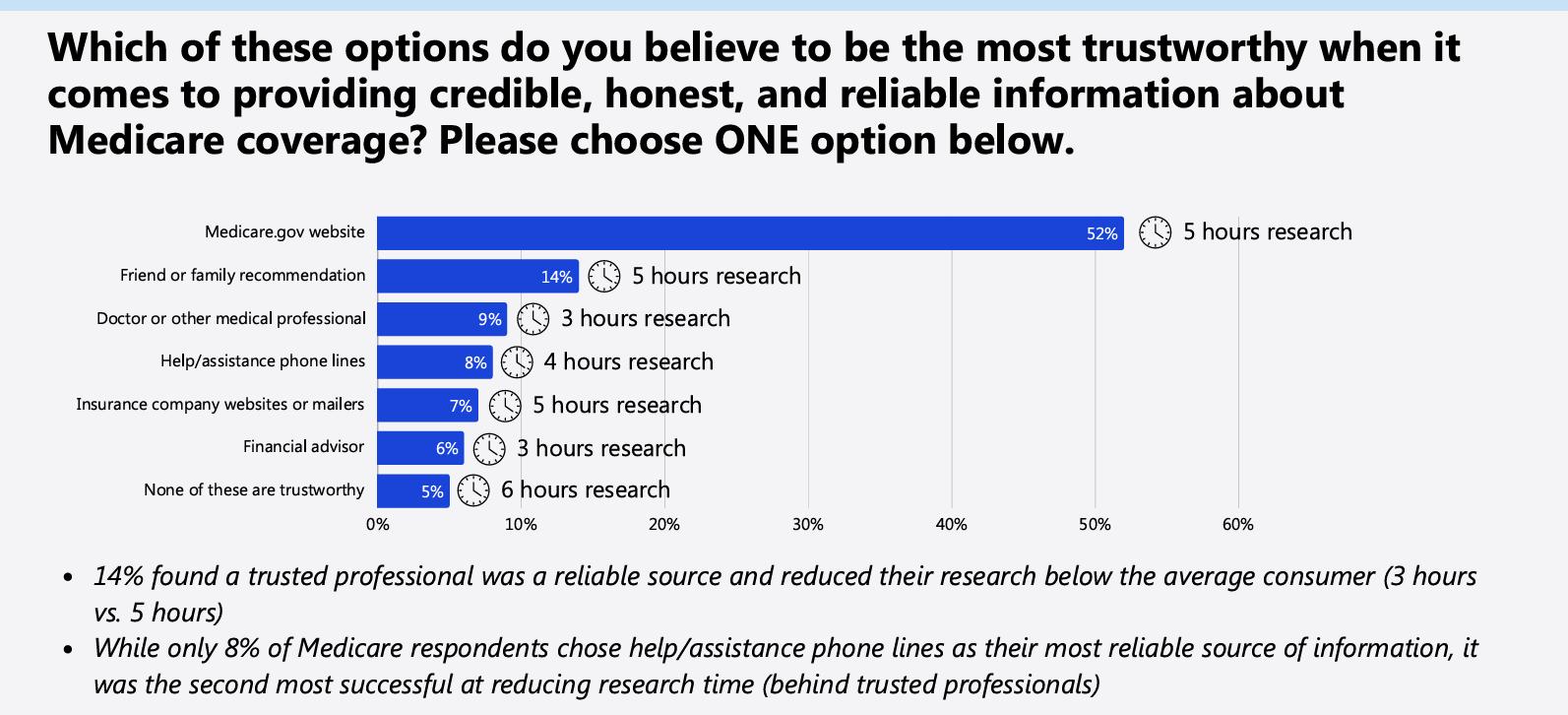


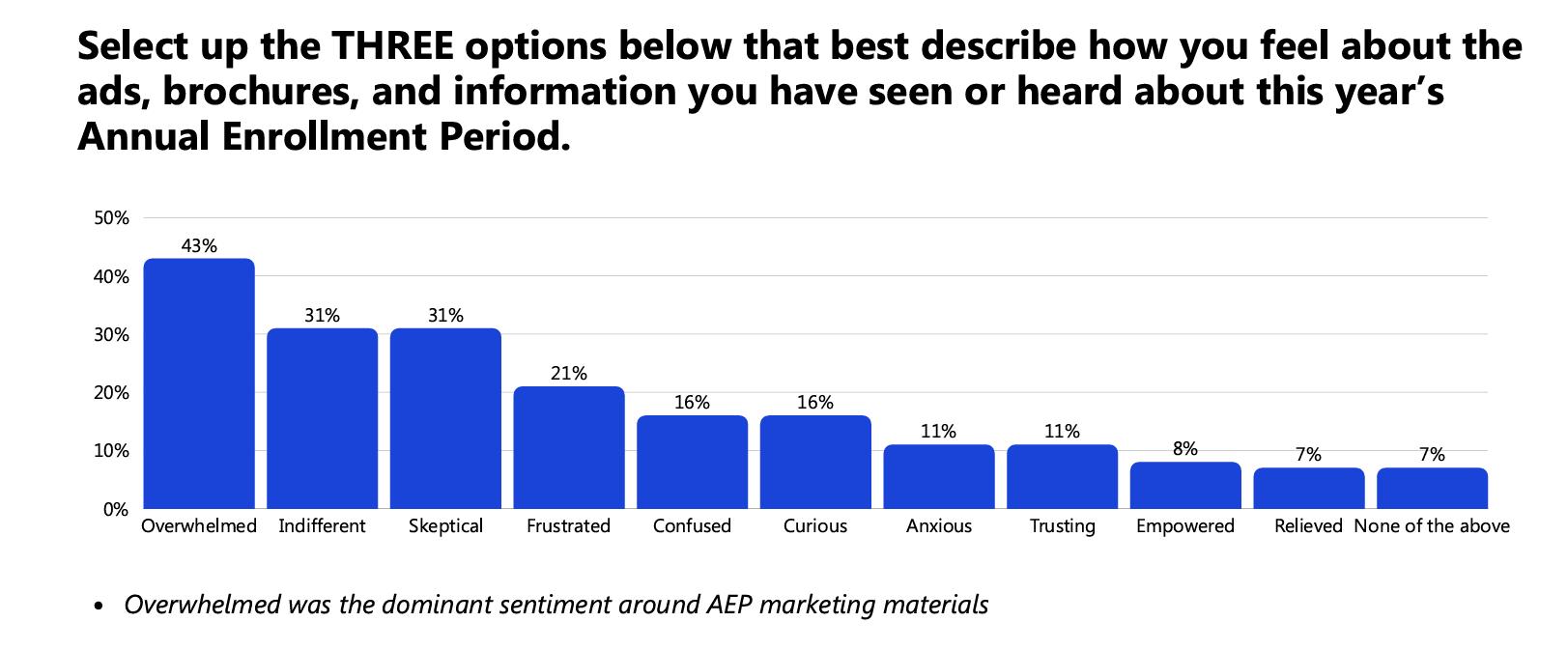
Implement comprehensive nurture programs that provide ongoing education about plan options, benefits and changes through email campaigns, webinars and direct-mail initiatives that break down complex insurance terms into easily understandable messages. Partner with physicians and financial advisors in education efforts, as consumers are more likely to trust and act on information provided by health care professionals than that provided by traditional advertisements. Simplify prescription coverage explanations and focus on what is staying the same in the plan versus only on what is changing.


existing doctors, and maintaining their provider network is critical to ensure continuity of care.
Many enrollees find AEP challenging to say the least, leading to decision fatigue and inaction. In fact, 43% of Medicare consumers describe AEP as “overwhelming,” while 21% find it “frustrating.” Perhaps not surprisingly, consumers tend to trust physicians and financial advisors over traditional AEP advertisements. In addition, 14% of Medicare enrollees who consulted a trusted professional spent less time researching their plan options — three
Source: Centerfield Insurance
hours instead of the typical five hours. Given these consumer insights, here are some strategies to improve engagement, satisfaction and retention.
Improve digital transparency by offering easy-to-understand side-by-side comparisons of available plans, including coverage, costs and benefits. Prioritize accurate, up-to-date provider directories to build trust and reduce frustration and ultimately boost retention rates. To enhance digital engagement, online platforms must provide easy-to-navigate, comprehensive and straightforward comparisons.
A strong media strategy can enhance consumer engagement and retention by delivering relevant, timely information across multiple channels. Use targeted digital campaigns to educate Medicare shoppers year-round, not just during AEP. By leveraging data analytics and AI-driven insights, carriers can identify key concerns within different consumer segments and tailor messaging to address specific needs.
4.
round engagement,
Proactive, year-round engagement is key to reducing AEP fatigue and helping consumers make informed decisions without the pressure of last-minute choices. AI-driven call center insights allow carriers to customize messaging, while nurture programs provide ongoing guidance to help consumers understand their plan benefits and switching implications. As Medicare consumer expectations shift, carriers as well as advisors must focus on education and accessibility. Refining marketing strategies and addressing critical knowledge gaps can build trust, drive enrollment and improve long-term outcomes.
Kris Schneider is the Medicare leader of Centerfield Insurance, based in Los Angeles. Contact her at kris. schneider@innfeedback.com.


Americans are on the precipice of huge financial choices as they prepare for retirement — a phenomenon described as “the great decide.” But a lack of confidence is keeping Americans from making the choices they need for a successful retirement.
Hitting the century mark seems to be a goal of fewer people, as the prospect of living to 100 comes with the fear of running out of money while their health goes downhill . New research on longevity from Nationwide Retirement Institute and the American College of Financial Services found only 29% of respondents said they want to live to 100. Of that percentage, three-fourths were mostly worried about running out of money before they ran out of time. Economic uncertainty brought on by tariffs and volatile market conditions also exacerbates those concerns.
Less than half (48%) of respondents factored longevity into their savings and investment choices. However, Americans are living longer, and most respondents also said they would make lifestyle and financial changes if they knew their lifespan would be longer.
The study found that if the average American lived even five years longer than they planned for in their retirement savings, their risk of running out of money increases by 41%. That percentage can reach as high as 300% when factoring in lower near-term returns.
Longevity “is becoming the most unaddressed risk when we think about retirement planning and long-term care,” said Kristi Rodriguez, senior vice president, Nationwide Financial Marketing.
Six in 10 younger Americans — 61% of Generation Z and 60% of millennials — are placing too much emphasis on building wealth and growing their assets without dedicating enough to protecting those assets and managing risk with life or disability insurance, according to Northwestern Mutual’s 2025 Planning & Progress Study.

Save early, save often ...
78% of Gen Zers said they already have become serious about their financial future.
Source: Corebridge Financial

The Employee Benefit Research Institute and Greenwald Research found that Americans’ determinants of financial happiness are receiving failing grades. For example, Americans measured their retirement savings at an average of 4.54 out of 10, and their ability to retire at the goal age at an average of 4.93. Nearly 70% said the economy is too uncertain for them to make big money moves, and more than half believe financial success is farther away than it was a year ago.
The desire for financial advice was made clear: 6 in 10 said they need advice more than ever, while 78% said having a financial plan made them happier and less stressed.
In explaining the focus of younger consumers on wealth building, Jason Thrap, wealth management advisor at Northwestern Mutual, said that it is wonderful to see the enthusiasm among younger generations to start saving and investing earlier in life.
For many, he added, the trends of cryptocurrency, meme stocks and FinTok influencers piqued their interest, leading them to explore other, more proven strategies to build wealth, like investments.

Eligibility rules can devastate families financially if proper planning is not in place. • Patrick Simasko and Kelsey Simasko
Planning for long-term care is a crucial but often overlooked part of estate planning. Determining who will care for you and how that care will be paid for can be an uncomfortable conversation, yet it could be make the difference regarding financial stability in retirement. For lower-income families and veterans, programs such as Medicaid and Veterans Affairs benefits increase access to health care at little to no cost. However, eligibility rules can devastate families financially if proper planning is not in place. As elder law attorneys in Michigan, we’ve experienced firsthand how the difference between crisis planning and preplanning has impacted our clients’ financial health and well-being.
Crisis planning vs. preplanning:
Understanding the difference
When it comes to Medicaid, crisis planning typically involves last-minute strategies to qualify for the public health program when the need for care is imminent, but the individual has too many assets to qualify.
The goal is to protect as much of the person’s assets as possible, while allowing them to become eligible for Medicaid quickly. Medicaid has an asset limit, which is typically $2,000 for individuals.
Therefore, in order to fall below the threshold, the person requiring care must “spend down” their countable assets such as cash or stocks. Tools such as Medicaid-compliant annuities combined with partial gifting are commonly used in an effort to minimize the penalty period imposed by the Medicaid five-year look-back rule.
The five-year look-back rule allows Medicaid to review all asset transfers from the past five years. If gifts or transfers are made for less than fair market
Be aware that Medicaid will go back five years from the day you applied and will penalize you if that gift was transferred within the last five years.
value, the program will impose a penalty period, causing you to become ineligible for Medicaid for a certain period of time. However, using Medicaid-compliant annuities can help avoid having to spend down everything while preserving assets for a spouse. These annuities are used to convert excess assets into an income stream, but the annuity must meet strict rules and name the state as the remainder beneficiary.
As for partial gifting, the individual needing care gives away part of their assets as a gift, thus triggering a penalty period. The remaining money is then used to buy an annuity that provides enough income each month to cover the cost of care during the penalty period.
This strategy helps minimize total outof-pocket costs and protects some assets from being spent. These strategies should not be used without the help of an elder law attorney.
Medicaid preplanning is the opposite. Instead of scrambling when care is needed immediately, preplanning involves protecting assets years in advance, allowing the individual to qualify for Medicaid without losing assets. There are two preplanning strategies to help achieve this: Medicaid Asset Protection Trusts and strategic gifting.
MAPTs are a special type of irrevocable trust that is designed to shelter assets from Medicaid. With this method, the individual transfers assets such as a house, savings or investments into a trust. By putting the assets in the trust, you give up direct control and ownership of those assets. A trustee then manages the trust. The transfer must happen more than five years before applying for Medicaid in order to qualify.
With strategic gifting, you’re giving away items such as cash or property to reduce your countable assets, and timing is critical. Be aware that Medicaid will penalize you if that gift was transferred within the last five years. But, if the item is gifted early, beyond the five-year window, you will not be penalized. It’s important to note that crisis planning and preplanning for Medicaid look different for married couples versus single individuals, so a financial advisor must guide the process.
In addition to Medicaid, there is a lesser known additional benefit called
VA Aid & Attendance for veterans and their surviving spouses. This benefit is an extra monthly payment that is added to a veteran’s or surviving spouse’s VA pension, specifically to help cover longterm care costs. This coverage ranges from in-home care to assisted living
work under VA guidelines are ways to increase eligibility.
Clients who are planning their estate, or even planning for retirement, can’t afford to skip long-term care planning. Figuring out how they want to be cared for and how much it will

The Medicaid Look Back Rule is designed to ensure that people aren’t receiving taxpayer-funded nursing home care after gifting assets that could otherwise have been used to pay for their care.
Giving gifts, transferring assets and selling goods for less than fair market value could delay your eligibility for Medicaid. You cannot always predict when you will need nursing home care. That is why it is so important to understand the Medicaid Look Back Period.
facilities and nursing homes. Similar to Medicaid, specific qualifications must be met in order to qualify.
The veteran must have served at least 90 days of active duty with at least one day during wartime, and they must not have been dishonorably discharged. As far as medical needs go, the applicant must require help with daily activities or be bedridden, in a nursing home or legally blind. As of 2025, the net worth limit is $159,240, including assets and individual income, minus unreimbursed medical expenses.
Similar to Medicaid, VA Aid & Attendance also has a look-back period. Instead of five years, the VA will go back three years to see if assets were transferred or gifted below market value. If transfers were made within three years, a penalty period will be imposed. However, through irrevocable trusts, an early transfer of assets or Medicaid-compliant annuities that are structured properly to
cost is crucial to ensuring they can get the care they deserve. If your clients are approaching retirement or preparing for estate planning, help them create a plan that works best for them. Referring clients to an elder law attorney can help them be compliant with look-back requirements.

Patrick M. Simasko, attorney with the Simasko Law firm in Mount Clemens, Mich., has dedicated his legal career to the practice of elder law. Contact him at patrick.simasko@innfeedback.com.

Kelsey Simasko is an associate attorney at the Simasko Law firm, where she specializes in elder law and wealth preservation. Contact her at kelsey.simasko@innfeedback.com.

Top advisors are maximizing their use of technology and helping clients anticipate risk.
By Faheem Shakeel
There was a time when mastering your product, being organized and keeping appointments was all it took to win as an advisor. But in 2025, that’s just the baseline. Today’s top performers aren’t working harder — they’re working smarter, faster and with a level of foresight that feels almost predictive.
Step into a conversation with one of these high-performing advisors and you’ll notice something different right away: They talk less about policies and more about experiences, risks and relationships. They’re not simply selling insurance — they’re building trust ecosystems, engineering customer journeys and rethinking what it means to truly add value.
Let’s explore what today’s most forward-thinking insurance advisors are doing differently and how your firm can follow suit.
In 2025, top insurance advisors aren’t simply using artificial intelligence; they’re leaning on it for a competitive edge. From smarter underwriting to 24/7 virtual assistants, AI is doing the heavy lifting so advisors can focus on what matters most: building relationships.
While best-in-class insurers embrace this shift, with Capgemini research showing 78% of insurers offer self-service AI portals, only 13% of mainstream carriers have caught up. That gap? It’s where today’s high performers thrive — anticipating needs, responding in real time and turning AI into real connection.
Many insurance prospects begin their journey online, often long before speaking to a sales representative or agent. LIMRA data reveals that 32% of
Step into a conversation with one of these high-performing advisors and you’ll notice something different right away: They talk less about policies and more about experiences, risks and relationships.
The best insurance advisors in 2025 aren’t playing the game — they’re reinventing it. As the industry shifts from transactional to transformational, top performers are stepping up as architects of resilience.

customers prefer buying insurance policies online.
In a digital-first world, perception is everything. That’s where a robust online presence and a well-oiled marketing strategy come in. And this isn’t only about having a website. It’s about building trust, educating audiences and creating a magnetic presence that pulls people in. Content is another great way to establish a robust online presence.
“By writing and publishing quality content on your website, you are providing answers to people in the buying process. They will be more likely to call or complete a quote request on the website,” said Becky Schroeder, chief marketing officer at Insurance Technologies Corp.
Online content should empower the audience, not just inform. Focus on pain-point content, thought leadership, storytelling and interactive tools such as premium calculators, comparison charts and return-on-investment models.
If the last few years have taught the insurance world anything, it’s this — risk is no longer static. It’s messy and morphing and manifests from directions no one saw coming.
Today’s forward-thinking insurance advisors don’t just react — they anticipate. Here’s how.
According to the 2024 Munich Re RiskScan survey, cyberattacks and climate change are now the top global concerns
for insurers and their clients.
For advisors, this means a seismic shift. Advisors are stepping into the role of risk translators — demystifying cyberthreats, breaking down climate exposures and building resilience roadmaps tailored to each client. Some are even bundling cyber-hygiene services and climate audits into their offerings. Because protection today isn’t only about policy — it’s about foresight.
Regulatory landscapes are changing faster than ever as environmental, social and governance mandates; AI usage rules; and digital privacy updates converge.
Top advisors are building real-time compliance pipelines. Think of dashboards that flag exposures, AI tools that auto-update terms and audit trails that write themselves.
With AI tools doing everything from risk scoring to client communication, advisors now ask the tough questions: Is the algorithm fair? Could this decision be biased?
Innovative firms are setting internal AI ethics playbooks. They’re conducting regular bias audits, documenting model decisions and making transparency non-negotiable.
Talent is a strategic advantage
In 2025, people strategy is business strategy.
The best insurance advisors aren’t just selling smarter; they’re building sharper teams. Insurance firms are feeling the heat, with fintech and big tech poaching top performers. And they’re responding by
turning talent into a competitive weapon.
“So we bring people in, and then, after a year or two or three years, they’re very disillusioned, and they go elsewhere. People decide there are other things they can do that make similar money, where they’re not being kicked in the face while trying to help people,” said Bryan Falchuk, CEO of the Property & Liability Resource Bureau. That means relying solely on financial incentives doesn’t work. Employees want purpose, growth and alignment with company values.
Modern firms aren’t waiting for attrition; they offer:
» Remote/hybrid flexibility without culture erosion
» Continuous learning — from AI tools to customer empathy
» Clear, purpose-driven career ladders
The best insurance advisors in 2025 aren’t playing the game — they’re reinventing it. As the industry shifts from transactional to transformational, top performers are stepping up as architects of resilience. They’re not just asking, “How can I sell more?” They’re asking, “How do I stay indispensable?”
Advisors are expanding beyond traditional roles, partnering with wealth managers, fintech and climate analysts to offer more than protection.
“Spend at least 30% to 40% of your time out there interacting, networking and forming communities, groups and clubs,” said Maxine Goddard, advisory board member at Insurance DataLab. “This industry is all about building connections.”
Many advisors are embracing M&A and platform ecosystems to scale faster and smarter. They also own their narratives. From LinkedIn posts to investor decks, leading advisors are painting a bold picture of the future — one where they help clients navigate volatility, not just insure against it.
Faheem Shakeel is vice president-insurance practice at Damco Solutions, Princeton, N.J. Contact him at faheem.shakeel@ innfeedback.com.


LIMRA research finds financial wellness down from two years ago, with younger and minority demographics feeling less secure. How can advisors help clients feel better about their financial futures?
By John Hilton
Ian Freeman wasn’t sure he would see his 50th birthday. The life struggles and inner torment caused others to tell him it wasn’t likely.
“What is interesting about that is, I didn’t do drugs,” Freeman recalled. “I didn’t mind having a drink, but I really didn’t drink. I didn’t do drugs. I didn’t smoke. I didn’t gamble. I didn’t do any of the other things that get people in trouble. And here I was being told I wasn’t going to see my 50th birthday.”
Mental illness issues, which he called “significant ones,” caused Freeman to struggle through a dark chapter before making it out the other side. He wrote a book, coming out this summer, detailing his journey.
“That journey, and especially in our world, with the stress we deal with in our journey, with rejection, with dealing with purpose, with self-doubt, with all the things that we have — I was just hopeful to tell that story,” Freeman said.
With more than 38 years of experience as a financial advisor, nearly all of them with Northwestern Mutual, Freeman is familiar with clients in financial distress.
“Financial wellness” is more than just a buzzword of the moment. LIMRA calls it “one of the biggest challenges for our industry and our nation.” A glance at some key statistics explains why.
Seventy-nine percent of employees say
they want workplace help “managing my financial future,” according to LIMRA wellness survey data released earlier this year. It is the No. 1 ranked wellness need cited by employees.
LIMRA findings correlate strongly with an Allianz Life 2025 retirement study, which found that only 70% of Americans feel confident in their financial future— down from 83% in 2020.
Confidence in meeting retirement savings goals is even lower at 61%, with just over half (55%) saying they’re saving enough in a retirement account—the lowest percentage in five years, Allianz found.
More than half (57%) of LIMRA respondents said they are “often distracted” at work by financial problems, by far exceeding distractions from physical or emotional concerns.
“It’s connected to so many other areas of wellness,” said Deb Dupont, assistant vice president, retirement plans research at LIMRA. “How happy are you if you’re financially distressed? It can absolutely impact your emotional and your physical wellness. It impacts your and your family’s financial stability, your ability to enjoy life, your ability to plan for the future, to be secure.”
LIMRA defines financial wellness as “being confident in your financial
situation, able to withstand unexpected expenses, and ... able to plan for a financially secure future.” Employee benefits help offset financial concerns and include health insurance, a retirement plan, paid time off and wellness programs.
LIMRA first assessed financial wellness in 2022 and is repeating the survey every two years. The most recent survey comes at a perilous time for Americans. While the effects of the pandemic are still being felt, respondents are facing education debt, rising inflation, housing shortages, and increased pricing on groceries and other consumer goods, LIMRA said.
“Financial wellness dropped by 11%,” Dupont said. “Physical and emotional were like a 5% or 6% drop. Financial wellness now is a little bit lower than the other types of wellness, but they’re so deeply interconnected as well, you can’t look at any one of them in a vacuum.”
Workers who use a workplace wellness program — whether to improve financial, emotional or physical/health — those who do participate in such programs report that their workplace benefits are significantly more effective in relieving stress, LIMRA found.
The most commonly offered wellness education features the management of work-life balance, while the most indemand but unavailable are education about managing stress and health, nutrition, and work-life balance.
LIMRA’s financial wellness survey helps researchers identify trends among specific demographics or generations. The data can help employers attract and retain workers by offering attractive benefits.
Millennials and Gen X are more stressed by job/career situations and by maintaining work-life balance, LIMRA found. Baby boomers, the oldest workers surveyed, are significantly less likely to use physical/ health-related wellness programs.
Women are more likely than men to report that they would use wellness support if offered by their employers, especially financial wellness, the survey revealed.
LIMRA research shows employee satisfaction with wellness programs is very high at 80% or more. These programs can improve worker productivity and also help with employee retention, “making it a smart
investment for employers,” LIMRA noted.
“If there are financial things in your life, that’s going to create emotional stress,” Dupont said. “Your blood pressure can go up. It bleeds and feeds into your emotional and physical states of well-being.”
Minority populations report some of the lowest financial wellness scores in the latest LIMRA survey. On a 10-point scale, retirees reported the highest financial wellness (6.33), with those earning $250,000 or more annually right behind them (6.25).
At the other end, Native American populations (3.4), the unemployed (3.94) and those earning less than $25,000 annually (4.19) reported the most financial stress. Women (4.64), African Americans (4.61) and people with only a high school education (4.32) all scored below the survey mean of 4.95.
“Different populations will have different starting points on that wellness scale,” Dupont explained. “Younger individuals, younger consumers and certainly younger workers will score a little bit lower on the scale.”
Many day-to-day stressors come with life in 2025 and, when applied to household finances, create a picture of uncertainty, Freeman noted.
Current generations of Americans are the first to be in full control of their retirement savings as the migration from defined benefit to defined contribution is essentially complete. That comes with decisions about 401(k) investment and management.
“One of the things we tend to ask people is, ‘Well, do you have a pension?’” Freeman said. “Most people will say no. So, the next question is, ‘Would you like one?’ In that case, you could help them plan toward something like that and understand that income trumps most things in retirement, because if you don’t have to think about paying your bills, there’s less anxiety and stress.”
The state of the economy under President Donald Trump is another source of financial uncertainty. Markets are oscillating to the extreme in response to the Trump administration’s tariffs and
other policies. Inflation continues to linger in the background as analysts revise growth projections downward.
On the plus side, Congress continues to embrace legislation to make it easier to include annuities inside retirement plans. And advisors are warming up to fee-based annuities. These headlines give Americans reason to feel better about their financial wellness because they see a path to guaranteed income, Freeman said.
“What’s it worth to have a piece of your income coming in that you don’t have to think about or manage when you’re old?” he asked. “What’s it worth so that a check keeps coming in? And that’s the part that we talk about as much as anything, and that resonates more with people than almost anything else.”
InsuranceNewsNet

Senior Editor John Hilton covered business and other beats in more than 20 years of daily journalism. John may be reached at john.hilton@innfeedback.com. Follow him on X @INNJohnH.
You don’t need another carrier that “used to” support life insurance. You need one that’s all in. Always has been. Always will be.
• Simple, client-focused, high-performing products
• Fast answers. Real people. Strong comp.
• Built for agents by people who’ve been in your shoes
Mutual Trust Life Solutions has been the best-kept secret in life insurance for too long.
For over 100 years, we’ve been quietly delivering. And as part of Pan-American Life, we’re ready to go even bigger.
Unlock Our Sales Solution Collection. Strategies, products, and tools you won’t want to sell without. Scan the code for access today!





Research shows clear evidence of the important role distribution partners play in raising brand awareness.
By Jennifer Douglas
Strong brand awareness can be particularly important in industries such as the life insurance industry, where customers make long-term commitments involving significant financial investments.
The benefits of having a well-known brand in this space are many — including reassuring potential customers of a company’s stability, enhancing perceived value, and fostering customer loyalty — which contribute to improved marketing efficiency and sustained business growth. Nonetheless, investing in advertising to build brand awareness among consumers is not a focus for all life insurance companies as some prioritize distribution strategies that leverage financial professionals to reach and retain their customers.
In an update to research conducted in 2014 and 2019, LIMRA explored consumer awareness of life insurance brands in 2025 and the factors driving consumer perceptions. Among the study’s findings, we see clear evidence of the important role distribution partners play in raising brand awareness.
Americans’ ability to name a life insurance company unaided has improved over the past decade, yet nearly 1 in 4 adults still cannot name a single carrier today and a majority cannot name three (see chart). As you might expect, awareness increases with age (up to age 65), wealth, financial knowledge and confidence in the industry. Consumer groups showing higher brand awareness include men, Black Americans, parents of young children, life insurance owners and


people who work with a financial professional to make at least some of their household’s financial decisions. Notably, half of adults who work with a financial professional can name three companies that sell life insurance compared with one-third of people who manage their finances independently. This effect remains true even when other factors such as age, wealth and ownership are taken into account.
While there are more than 700 life insurance companies in the U.S., survey respondents named 257 unique entities (including some insurance agencies, associations and nonspecific entities like “Mutual”). The 10 most frequently named companies in 2025 accounted for 56% of all consumer mentions. As people often don’t differentiate between different types of insurance companies, the list of the best known “life insurance” companies includes personal line insurers again this year.
• MetLife
• State Farm
• Prudential
Top 10 leaders in consumer mindshare *Company does not manufacture life insurance itself, but places business with other carriers. • Allstate
Mutual of Omaha
GEICO*
Here again, the study’s results reveal the influence of strong distribution networks in the life insurance space. For example, we see companies such as Northwestern
Mutual and MassMutual rise in the mindshare rankings among adults who work with financial professionals. Respondents receiving professional advice were less likely to point to advertising as a reason for their recall — 40% compared with 46% of people who do not work with a financial professional — and more likely to attribute their awareness of a life insurance brand to ownership (41% versus 32%) and/ or the company’s reputation (33% versus 27%). Where reputation was a reason for recall, consumers who work with financial professionals tend to have slightly higher opinions of the life insurance companies. It’s worth noting that opinions of the companies named were largely positive across the board and almost never negative.
LIMRA’s study underscores the importance of brand awareness in the life insurance industry and highlights the important role financial professionals can play in this process. For companies that prioritize distribution over advertising, leveraging the influence of financial professionals can significantly enhance consumer awareness and trust.
Jennifer Douglas is LIMRA senior research director, research quality and performance. Contact her at jennifer.douglas@ innfeedback.com.


We need leaders at every level who are willing to think differently, act boldly and lead with clarity and care.
By Bonnie Godsman
The financial security profession stands at a turning point. Amid economic uncertainty, evolving consumer expectations and rapid digital transformation, professionals across the industry are asking an urgent question: What will it take to lead in a way that builds lasting trust, drives meaningful outcomes and delivers true financial sec urity for a ll?
The answer lies in how we define leadership.
Too often, leadership is viewed through the narrow lens of title or tenure. But in today’s dynamic environment, leadership is about influence, impact and a deep commitment to purpose. It’s about showing up, not only when it’s easy or convenient, but when it’s uncomfortable, complicated and necessary. For the financial security profession to thrive, we need leaders at every level who are willing to think differently, act boldly and lead with clarity and care.
At its core, our work is about people — not products. Although technology can scale access and automate transactions, it cannot replace the human element.

Financial security professionals are entrusted with helping individuals and families navigate their most personal and often emotional decisions — from building wealth to protecting a legacy. That trust is earned not through algorithms, but through relationships.
If we want to deliver better outcomes for clients, we must be relentless about raising the bar. That means moving toward holistic planning — planning that considers not just income and investment, but longevity, legacy and long-term security. The recent EY study confirms what many of us have known for years: When consumers work with a trusted professional and have a plan that includes permanent life insurance, investments and annuities, they achieve stronger financial outcomes.
But to deliver this level of value, we need to continue to bring in more leaders who are willing to invest in their teams, their
development and their vision. Building a high-performance culture means challenging the status quo, embracing innovation and creating space for diverse perspectives. It also means putting in the work behind the scenes — ensuring that our profession is well positioned, well respected and well represented in the conversations that shape policy and perception.
Perhaps most important, leadership today requires a commitment to something bigger than ourselves. Financial security for all isn’t just a tagline, it’s a call to action. It’s about expanding access to underserved communities and creating opportunities for upward mobility. It’s about being advocates, educators and change-makers in a profession that has the potential to transform lives.
Leadership in the financial security profession isn’t about having all the answers. It’s about being willing to ask the hard questions, build the right relationships and take responsibility for shaping the future.
Because if we don’t lead with purpose, someone else will define that purpose for us.
Bonnie Godsman is the president of Finseca and the Finseca Foundation. Contact her at bonnie.godsman@innfeedback.com.

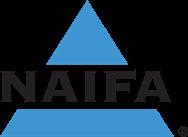
Good policy that promotes financial security for American families and businesses should be nonpartisan.
By Doug Massey
As financial professionals, we serve our clients’ best interests every day. For most of us, that suggests things such as putting the correct insurance in place for a young family, helping our clients identify and achieve their financial goals, and working with those approaching retirement to ensure they have guaranteed income and proper health care coverage when their working days are over.
Those are the most obvious answers, but there are other important things we can do to work in our clients’ best interests. For me, being politically involved is a vital part of my professional life and what I do for my clients.
I became involved in politics early in my career. The impact I could make really hit home in 2001 when I was asked by the executive director of NAIFA-Texas to drive to Austin — a three-hour trip from my home — for a 7 a.m. meeting with my state representative, Rob Junell, who happened to be the Appropriations Committee chair. His support was key to the success of a proposal to protect consumers’ life insurance and annuity contracts from creditors. Junell came from a family of bankers and the banking industry opposed the creditor exemption for insurance products. But I explained to him how the legislation would benefit my clients and other families who were working to achieve financial security, and he came around to agree with our position. He supported the bill, and it was soon signed into law.
I saw firsthand how being politically involved was another way I could serve my clients and community. It made a

strong impression on me. I have attended every one of NAIFA’s Congressional Conferences and every NAIFA-Texas State Legislative Day since 1991. Advocacy is an important part of what I do.
Many people shy away from discussing politics these days, especially in a business setting. I generally don’t have full-blown political debates with my clients about things such as foreign policy and social issues. We all have our opinions, and those types of discussions can become divisive or even heated. That’s not necessarily good for business.
But I do talk to them about how decisions made in Austin and Washington affect their finances or their ability to work with me or another financial professional. After all, good policy that promotes financial security for American families and businesses should be nonpartisan. I tell clients how I work with NAIFA to ensure tax laws encourage people like them to protect themselves with life insurance and annuities and properly prepare for retirement. I talk about how I educate policymakers on proposals that could make financial products and services more expensive or less accessible.
My clients know that I travel to Washington and Austin to meet regularly with our elected officials and support policies that promote financial security and prosperity. They know I’m working on their behalf. It’s another service I provide, and many clients appreciate it.
I have found that financial professionals are exceptionally strong political advocates. We are comfortable talking to people and offering information and stories to help others make good decisions. We are excellent relationship builders. These skills translate well in a political advocacy setting.
Over the years, lawmakers have come
to trust me as a resource and someone who can give them insights into the financial situations of their Main Street constituents. I’ve become friends with Sen. John Cornyn. I know Sen. Ted Cruz and have friends who work for him. I’m on a first-name basis with my representative, August Pluger, and I meet with him regularly. He invited me to his celebration on election night and I was honored to attend. These are decision-makers who will give me a call if they have questions about an important issue within my professional expertise.
Political advocacy sometimes can affect the careers of financial professionals even more directly. I know fellow NAIFA members who have professional relationships with lawmakers, serving as their insurance agents or financial advisors. A number of NAIFA members have gone on to serve in political office themselves as state insurance commissioners and lawmakers, as well as U.S. representatives and senators.
Advocacy success starts with participating in the process and making an effort to build relationships with lawmakers. Fly-ins and state legislative days sponsored by NAIFA and other professional associations are great opportunities to get your foot in the door. Another great way to connect with lawmakers is in a comfortable setting in your home district. Each summer, NAIFA facilitates in-district meetings with lawmakers during the August/ September congressional recess, and hundreds of financial professionals across the country participate.
However you make your connections, I strongly encourage every financial professional to give grassroots advocacy a shot. It strengthens our political system when citizens like us are involved. It’s exhilarating to know you can make a difference. It’s good for your clients and is a way for you to look out for their interests. And on top of everything else, it’s simply a good business decision.

Doug Massey, CLU, ChFC, LUTCF, FSS, is the owner of Doug Massey Financial Services in San Angelo, Texas, and is NAIFA’s 2025 national president. Contact him at doug.massey@innfeedback.com.
65%
INCOME REPLACEMENT

The High Limit Disability Income protection plan has been developed specifically to meet the needs of high-income earners. A High Limit Disability Plan through Lloyd’s of London provides coverage to those who would like to obtain more protection beyond their existing Disability Plans. Our goal is to provide 65% replacement in income. Lloyds of London is the only market that makes this available.
As incomes increase, the issue and participation limits of traditional Disability Insurance carriers begin to decrease. To properly insure a highly compensated individual at 65% of income, multiple disability income plans are often required and are layered to provide sufficient income protection.
The following scenario illustrates the way income protection plans can be layered to provide an individual with 65% coverage of monthly income.

EXECUTIVE
INCOME: $900,000 annually $75,000 monthly
This youngest generation of adults is ready to get serious about life insurance.
By Amanda Cassar
Nearly half of Generation Z is now at a pivotal stage in life: They’re part of the workforce, managing new expenses and balancing the desire to enjoy life with the need to plan for their future. As they begin building a financial foundation, life insurance might feel like a distant or unnecessary priority. Many young adults delay life insurance planning due to limited income and the common mindset of “[insert bad thing here] won’t happen to me.” Financial advisors have an opportunity to change that narrative.
By understanding Gen Z’s mindset, both financially and personally, advisors can facilitate conversations around life insurance in ways that deeply resonate with members of this age group. Tailoring your services to Gen Z’s digital-first habits, values-driven perspective and preferred learning styles can help you better support and safeguard their future.
Every generation faces a learning curve in their 20s, but Gen Z stands out for their more conservative financial approach compared to that of millennials. Gen Z has found a happy medium between risk-taking and cautious saving, making them more receptive to conversations about financial security. By understanding this frame of mind, advisors can position life insurance as an essential part of a balanced financial strategy — offering security for the future while continuing to live for today.
Storytelling is another powerful strategy to establish life insurance as a form of risk mitigation. Sharing real-life examples about young adults whose families were either financially protected or left



struggling after an unexpected loss helps make the importance of life insurance feel more tangible. Once that emotional foundation is built, clients will be more receptive to discussions about the potential risks of delaying life insurance, such as paying higher premiums later or missing out on the compounding benefits of starting early.
However, Gen Zers are unlikely to engage with you if it feels like you are giving them a sales pitch instead of having an authentic discussion. Position life insurance as part of financial self-care. Start with the bigger picture and present it as a “love contract” — a way to help protect their legacy and loved ones. Avoiding jargon and instead providing education are critical to maintaining Gen Zers’ engagement. Breaking down complex ideas into digestible pieces of information will help further shift the perspective on life insurance in the right direction.
To get Gen Zers in the door, advisors must meet them in the space Gen Z knows best: the digital world. When seeking financial education, this generation often turns to social media before looking for guidance from an advisor. This can potentially lead them to misinformation about topics such as life insurance, as “finfluencers” are not always licensed professionals.
Advisors must proactively engage through these channels, embracing new platforms, rather than waiting for younger clients to show up on their own. The same tactics of reframing and storytelling can be leveraged online to help attract and connect with this new generation of clients.
It’s essential to understand how strongly values shape Gen Zers’ financial decisions. They’re socially conscious and seek companies that align with their beliefs. When possible, connect them with insurers that amplify environmental, social and governance or values-based principles. Gen Z will prioritize not just good policies, but also good partners.
As the “great wealth transfer” accelerates, the opportunity to guide Gen Z with solid financial advice is massive — but only by creating a partnership that empowers them to take control of their financial futures and legacies with confidence.

Amanda Cassar is the co-founder and director of Wealth Planning Partners. She is a 13-year member of MDRT, is a current MDRT Top of the Table member and previously served as the MDRT Australia chair. Contact her at amanda.cassar@innfeedback.com.



Say
Fixed Rate—Yes, you read that right.
S&P
GENEROUS LIQUIDITY: 15% annual penalty-free withdrawals— Because flexibility matters.
ACCUMULATION FOCUSED: 12% premium bonus option**— Boost the annuity value from day one and jump-start earnings.
EclipseMark is a product of Standard Insurance Company, Portland, OR. The Standard is a marketing name for StanCorp Financial Group, Inc. and subsidiaries. Insurance products are offered by Standard Insurance Company of Portland, Oregon in all states except New York. Product features and availability vary by state and distributor and are solely the responsibility of Standard Insurance Company. Products are designed and exclusively marketed by Legacy Marketing Group®, an independent agency. Legacy Marketing Group is not an affiliate of The Standard or its affiliates. EclipseMark is a service mark of Legacy Marketing Group. Contract: ICC17-SPDA-IA(01/17), SPDA-IA(01/17), SPDA-IA(01/17)FL. Riders: ICC24 R-VPB, ICC24 R-PTP-GPR, ICC24 R-PTP-TIR, ICC17-R-PTP, ICC17-R-GMAB-IA, ICC17-R-MVA-IA, ICC17R-TCB-IA, ICC17-R-NHB-IA, ICC17-R-ANN-IA, ICC17-R-DB-IA, ICC17-R-ANNDW, ICC17-R-POF-IA, ICC20-R-IRA, ICC20-R-Roth IRA, ICC20-R-QPP, R-VPB, R-PTP-GPR, R-PTP-TIR, R-PTP, R-GMAB-IA, R-MVA-IA, R-TCB-IA, R-NHB-IA, R-ANN-IA, R-DB-IA, R-ANNDW, R-POF-IA, R-IRA, R-Roth IRA, R-QPP, R-GMAB-FL, R-MVA-FL, R-ANN-FL, R-IRA-FL, R-Roth IRA-FL, R-QPP-FL, R-DB-IA-FL. Annuities are not guaranteed by any bank or credit union and is not insured by the FDIC or any other governmental agency. Some annuities may go down in value. Guarantees are based on the financial strength and claims-paying ability of Standard Insurance Company.
The “S&P 500®” and “S&P 500 IQ 0.5% Decrement Index” (“S&P 500 IQ Index” or the “Index”) are products of S&P Dow Jones Indices LLC or its affiliates (“SPDJI”) and have been licensed for use by Standard Insurance Company (The Standard). S&P®, S&P 500®, US 500™, The 500™, iBoxx®, iTraxx® and CDX® are trademarks of S&P Global, Inc. or its affiliates (“S&P”); Dow Jones® is a registered trademark of Dow Jones Trademark Holdings LLC (“Dow Jones”). The Standard’s Fixed Indexed Annuities are not sponsored, endorsed, sold or
S&P, their
and none of such parties make any representation regarding the advisability of
and


Allianz Life Insurance Company of North America
Introducing Allianz Benefit Control+™ Annuity and Allianz 222+™ Annuity
We’ve taken our top-selling income FIAs1 to the next level with powerful new benefits designed to offer your clients more flexibility and control than ever before.


New access enhancements
• Income Flex Benefit – Allows clients to access more of the annuity’s value sooner to help address life’s unexpected events. 2
• Enhanced penalty-free withdrawals – Allows for unused free withdrawal percentage to carry over into the following year, up to a maximum of 20%

New crediting innovations (available on select indexes)
• 1-Year Highest Daily Value crediting method with a participation rate
• Performance Trigger crediting method

New indexing diversification3
• Pure equity option with no volatility control
• Daily rebalanced equity strategies for smoother performance
• Trend-driven strategy with exposure to tech equity
PLUS the same powerful benefits you trust:
• Income options now or later
• Premium and interest bonuses
• Flexibility to adapt to changing needs
Don’t miss out — Allianz Benefit Control+™ Annuity and Allianz 222+™ Annuity.
→ Scan the code to download the Guide to Allianz’s Refreshed FIAs.
Fixed index annuities are designed to meet long-term needs for retirement income. They provide tax-deferred accumulation potential, guarantees against the loss of principal and credited interest, and the reassurance of a death benefit for beneficiaries.
1Allianz internal sales data for Allianz 222® Annuity and Allianz Benefit® Control Annuity
2In some circumstances, using the Income Flex Benefit may deplete the accumulation value more quickly. If the accumulation value goes to zero, other benefits may be impacted.
3Diversifying allocations within a fixed index annuity does not ensure an interest credit in any crediting period. No single allocation option will be most effective in all market environments.
The indexes available within the contract are constructed to keep track of diverse segments of the U.S. or international markets, or specific market sectors. These indexes are benchmarks only. Although an index may affect interest credited, clients cannot buy, directly participate in, or receive dividend payments from any of them through the contract.
Bonus annuities may include higher surrender charges, longer surrender charge periods, lower caps, higher spreads, or other restrictions that are not included in similar annuities that don’t offer a bonus feature.
Distributions are subject to ordinary income tax and, if taken prior to age 59 1/2, a 10% federal additional tax.
Annuities are issued and guaranteed by Allianz Life Insurance Company of North America, 5701 Golden Hills Drive, Minneapolis, MN 55416-1297. www.allianzlife.com (C64997-MVA, R95581-02-MVA, R95581-03-MVA)
Product and feature availability may vary by state and broker/dealer.
This content does not apply in the state of New York.
For financial professional use only – not for use with the public